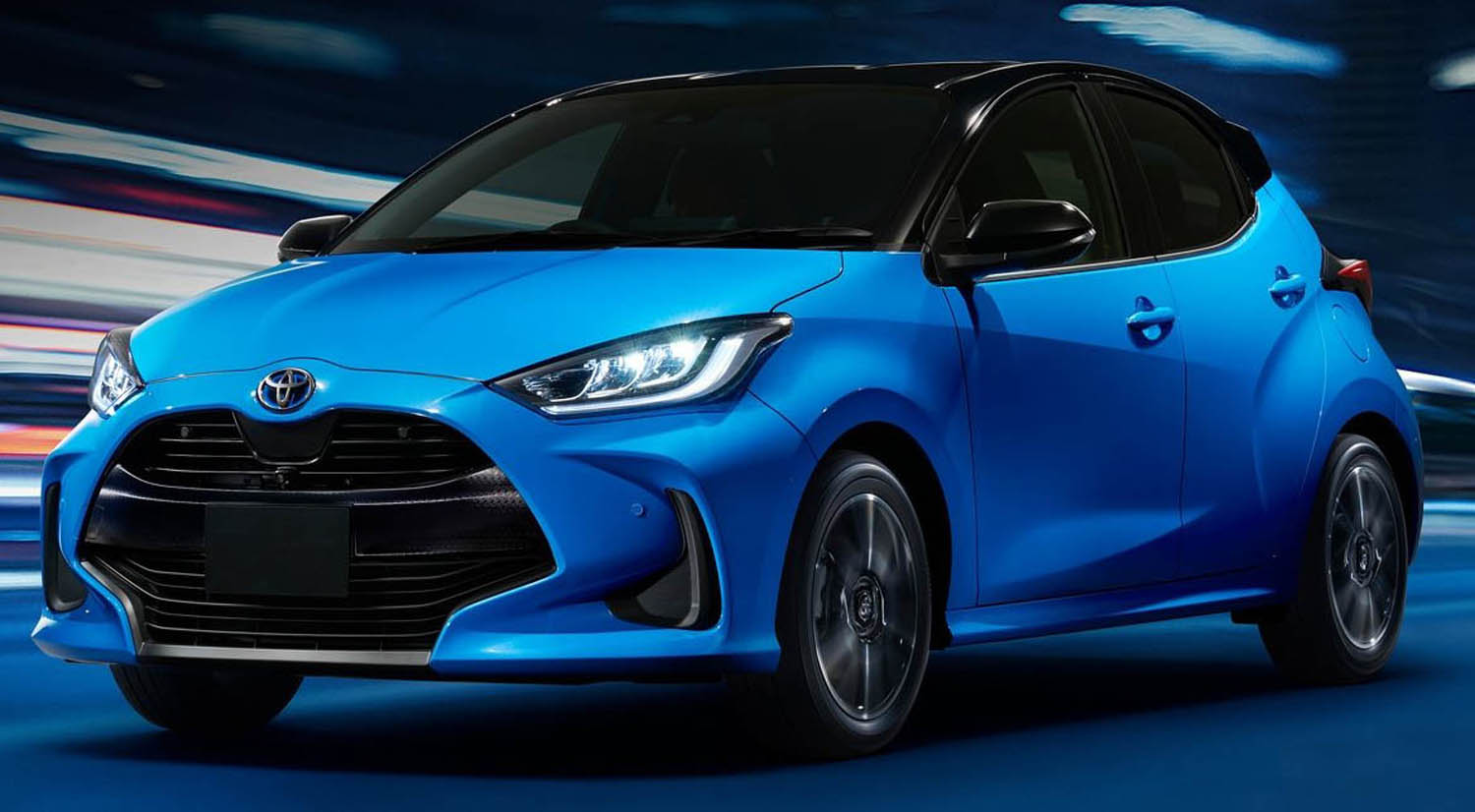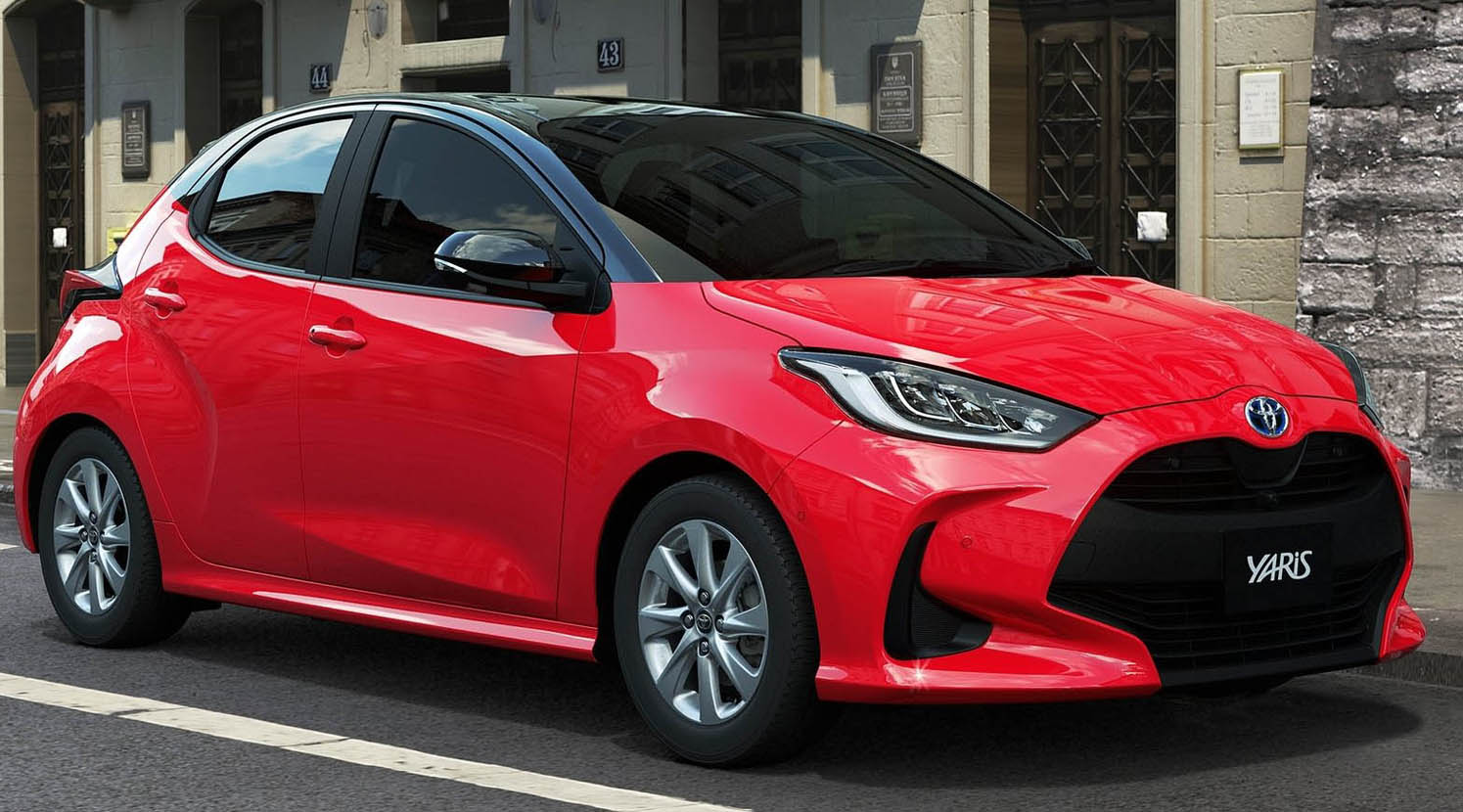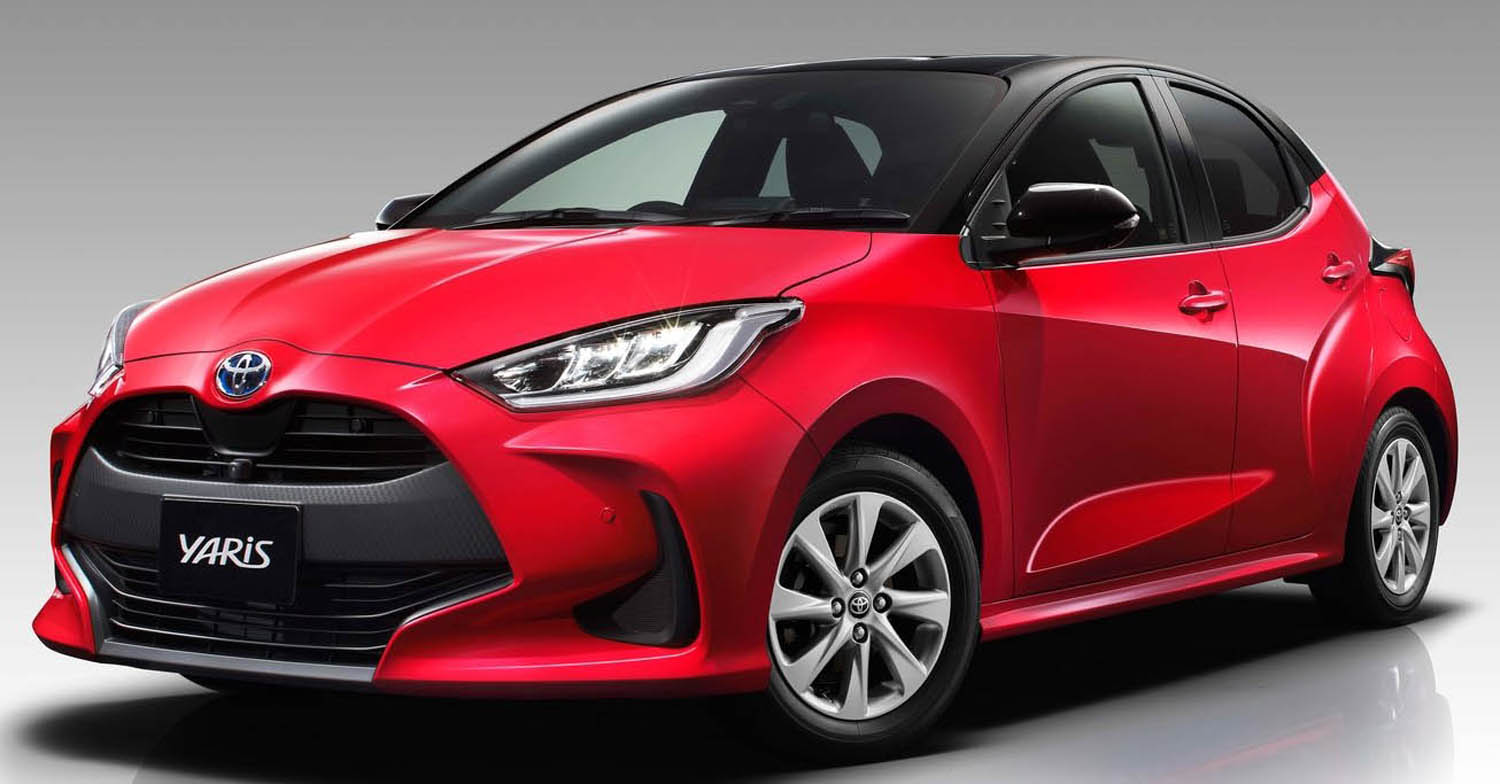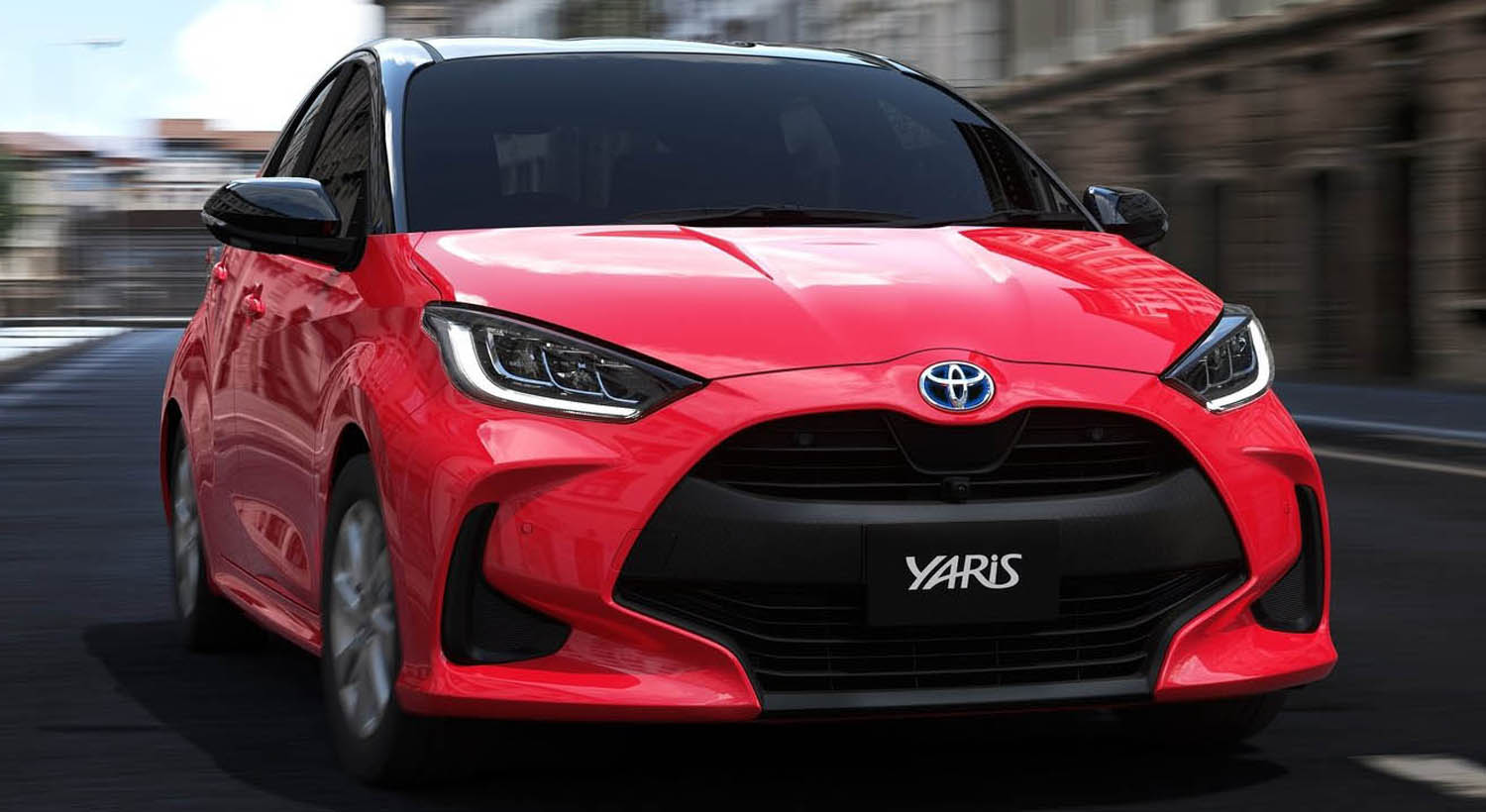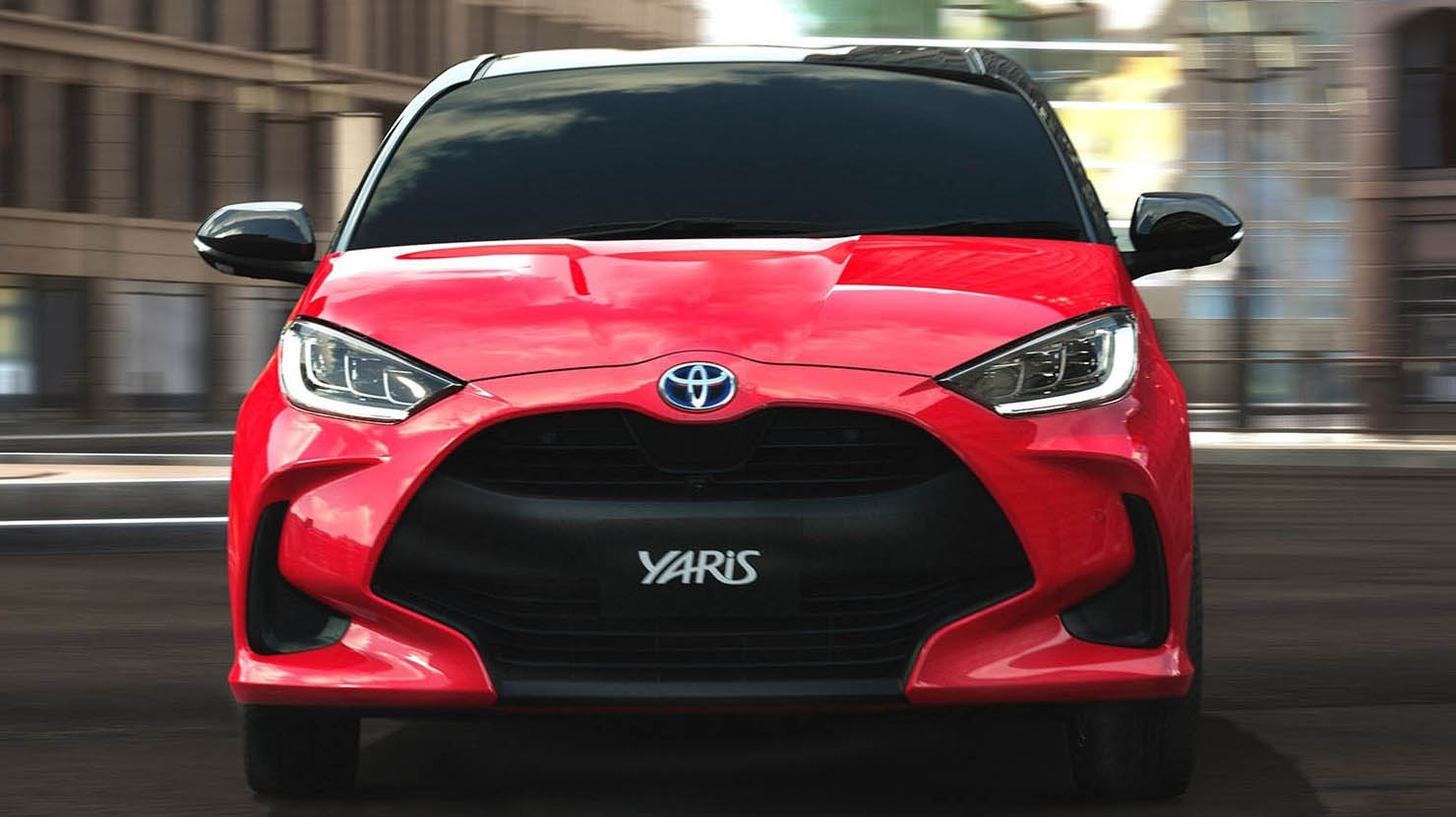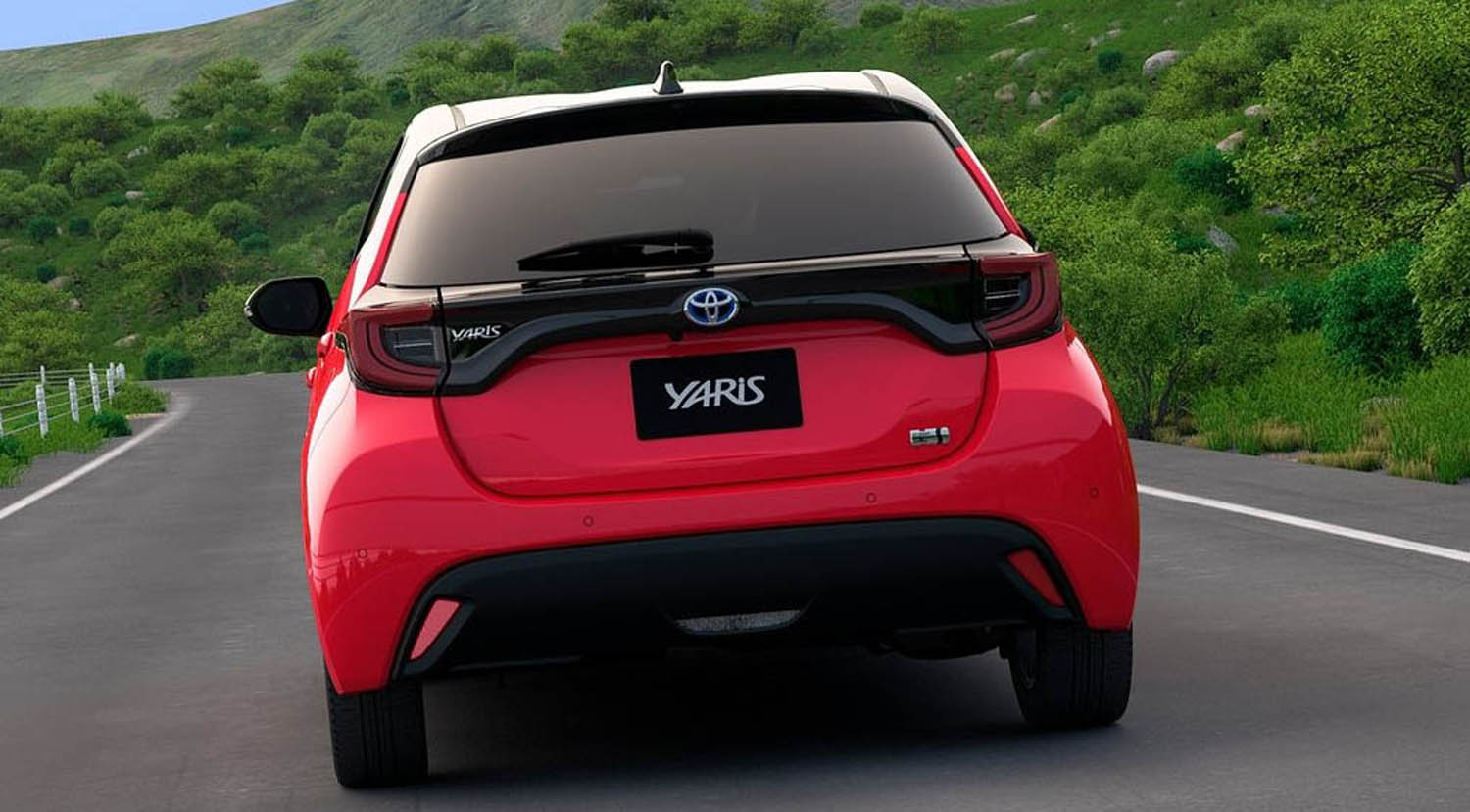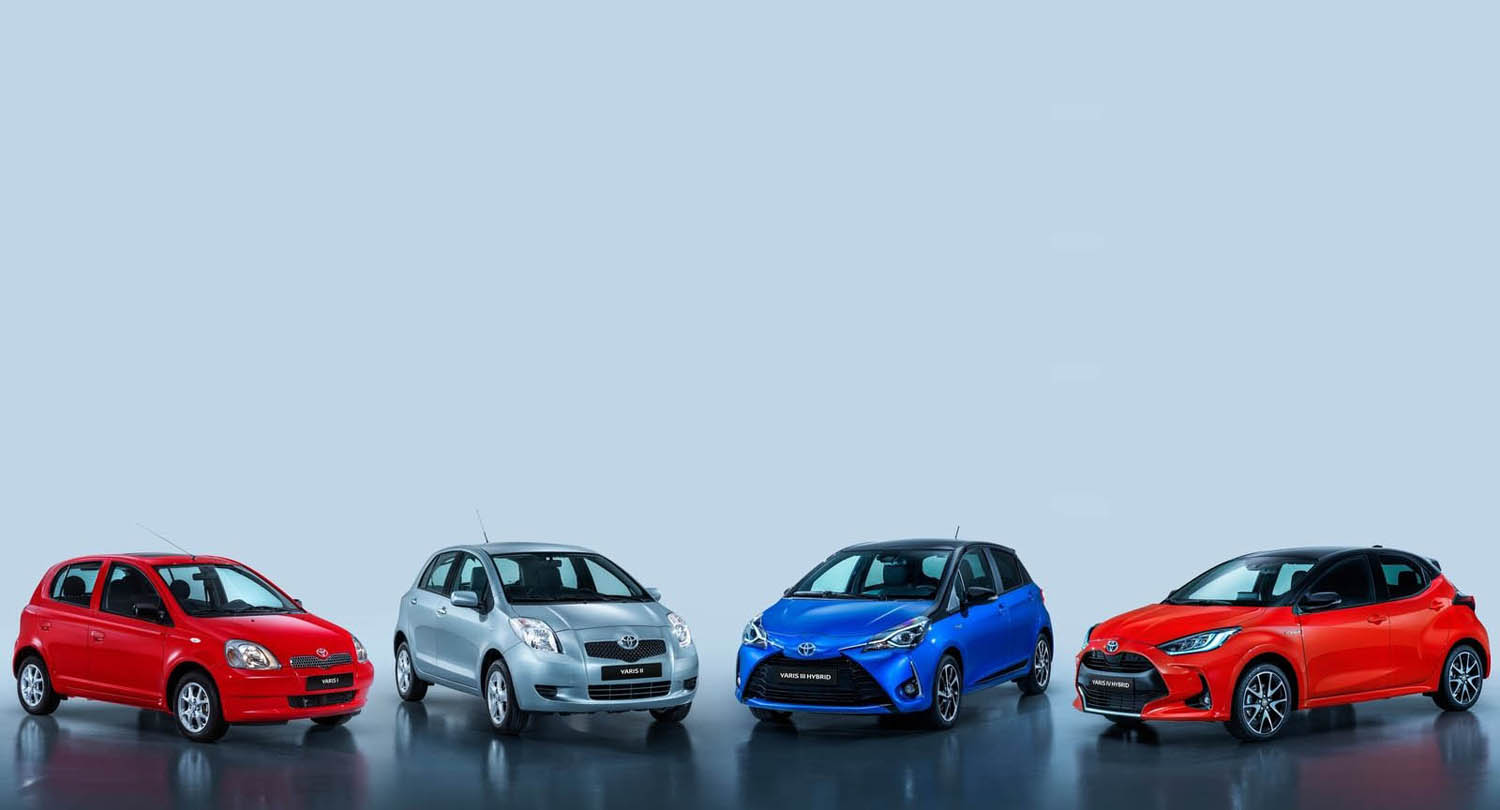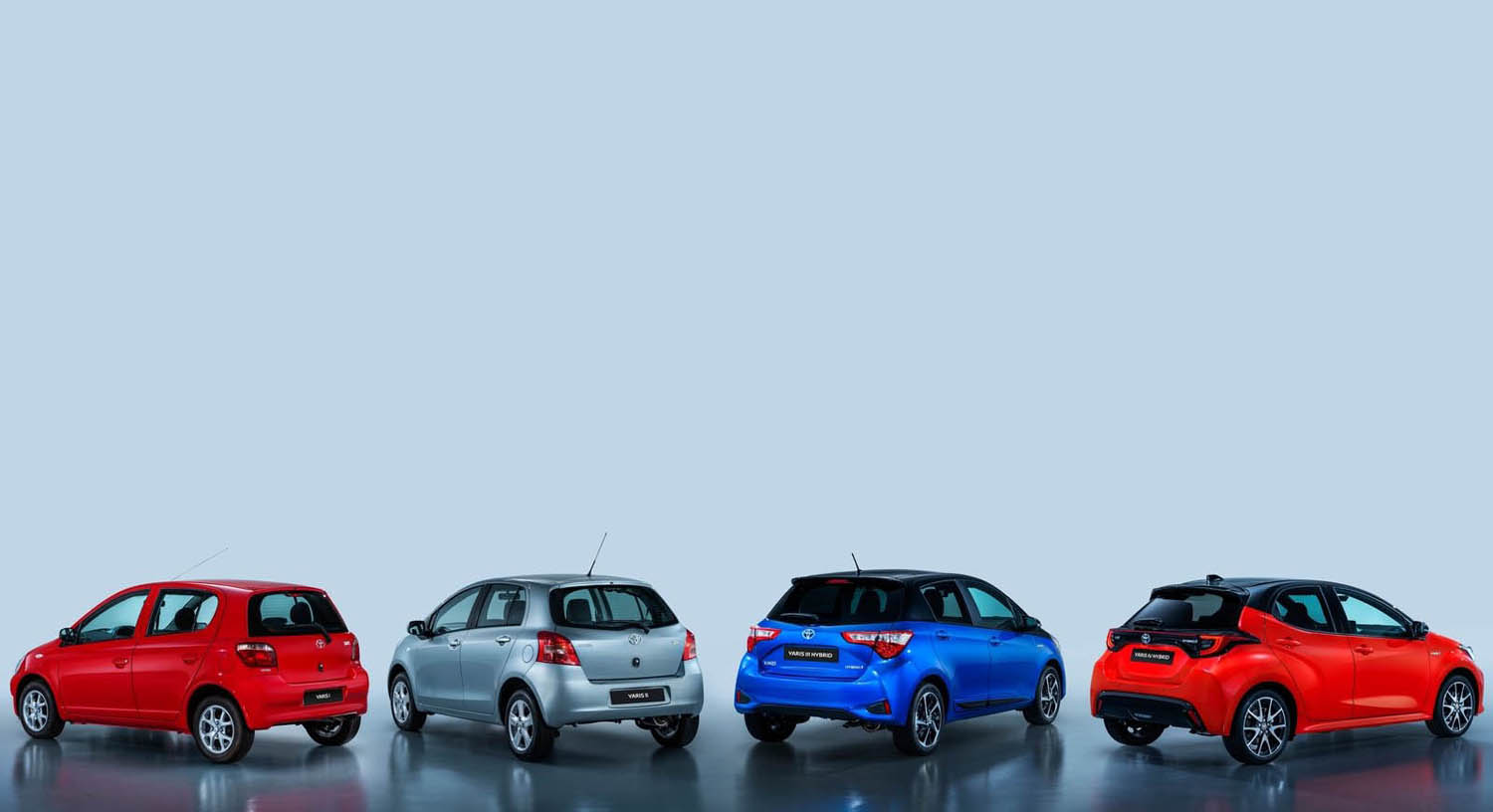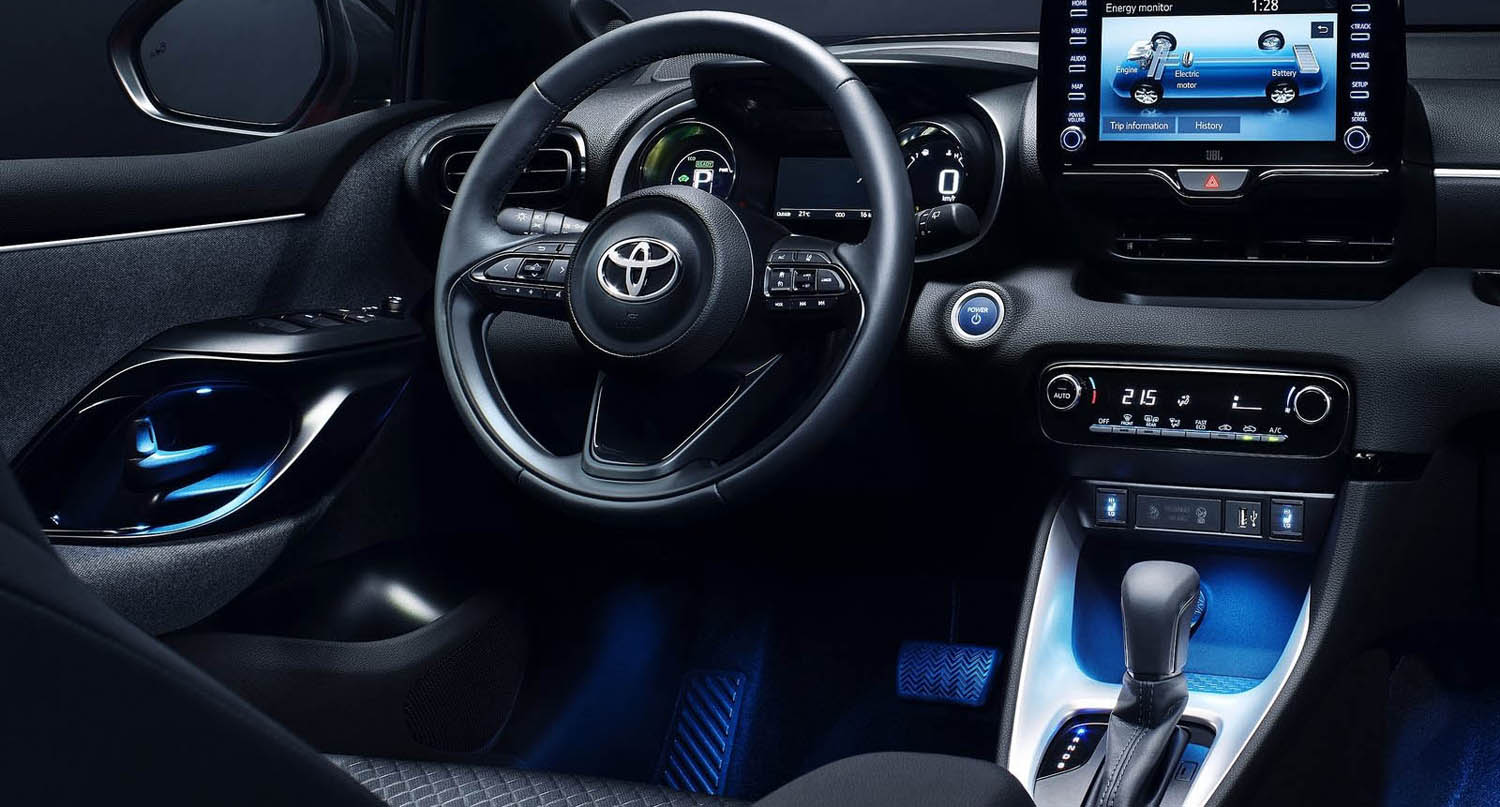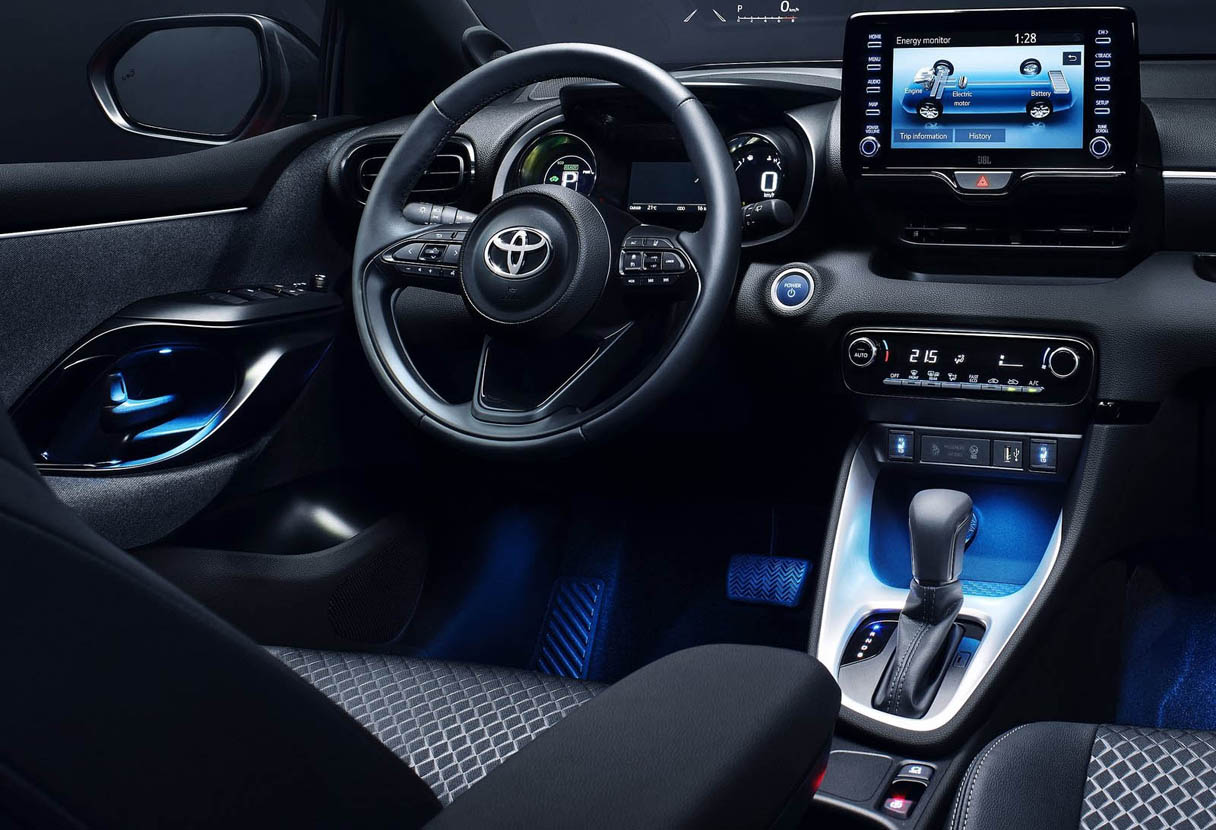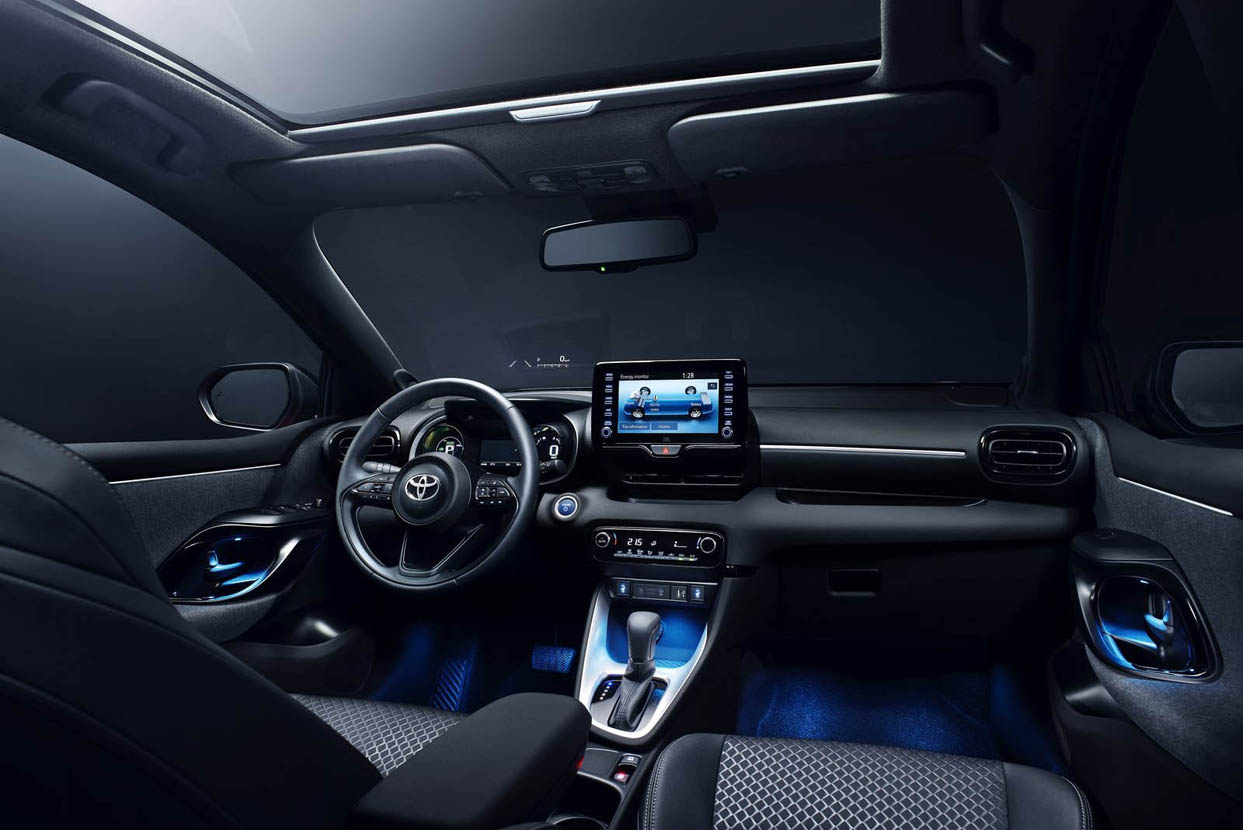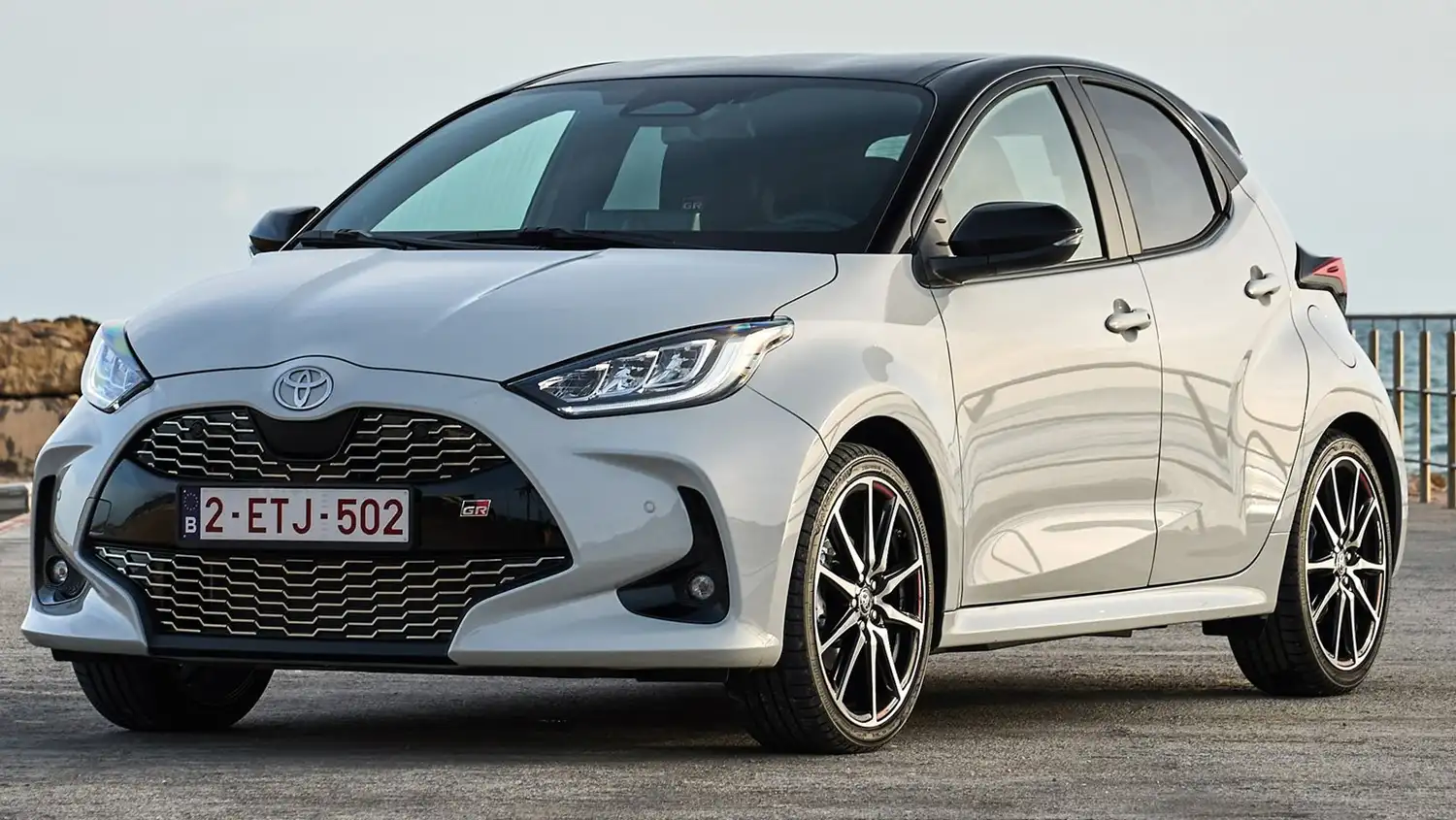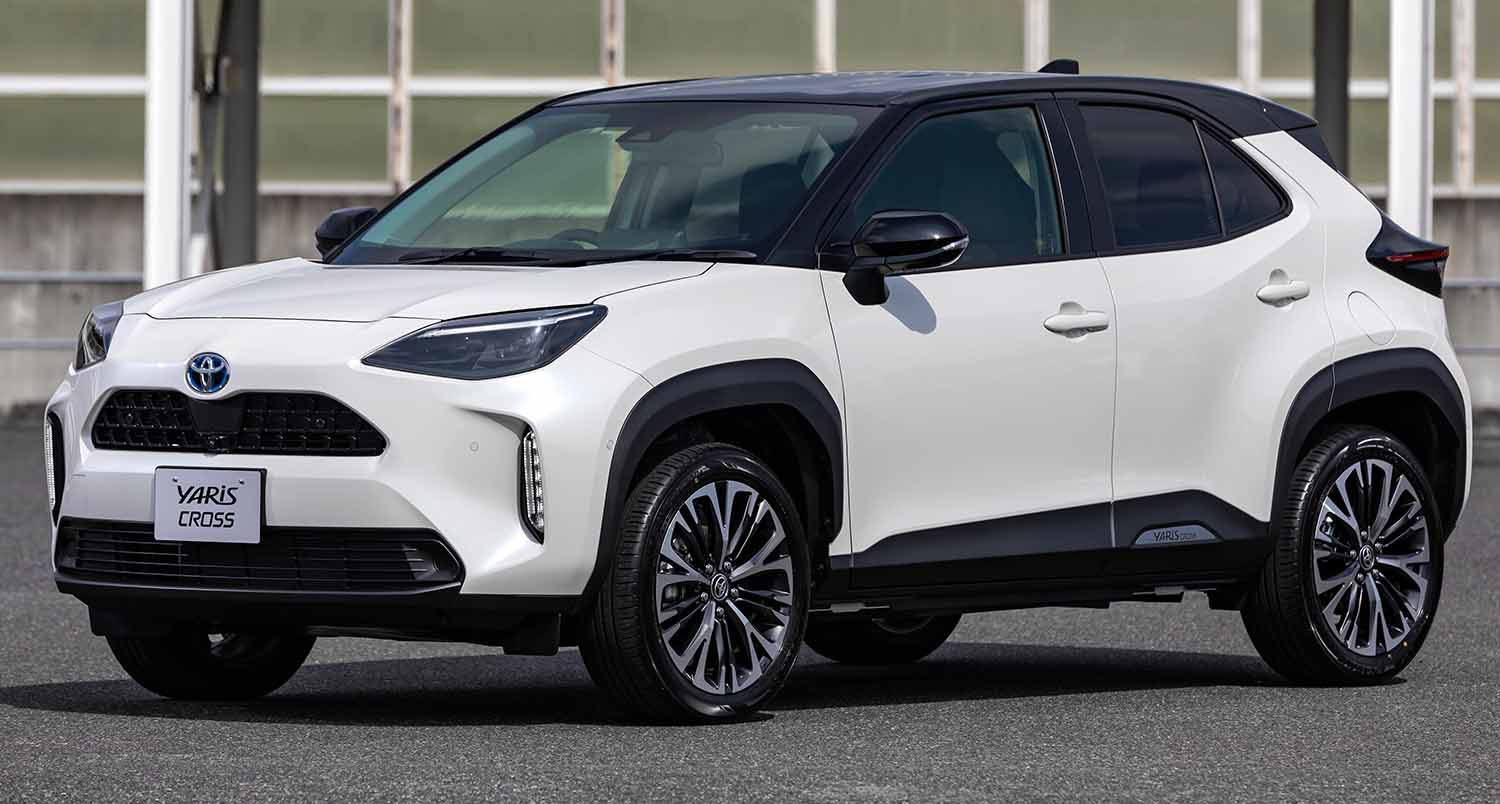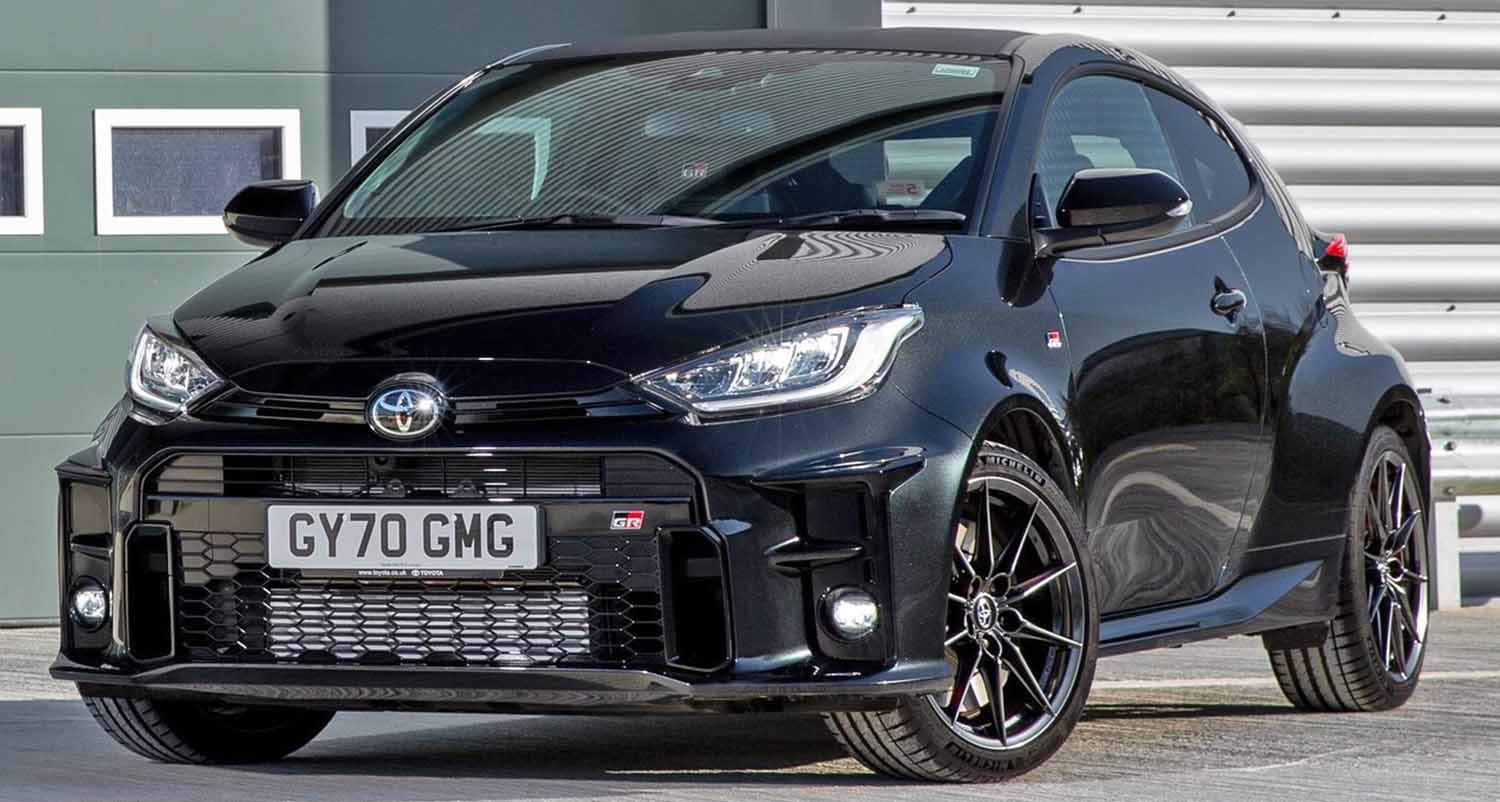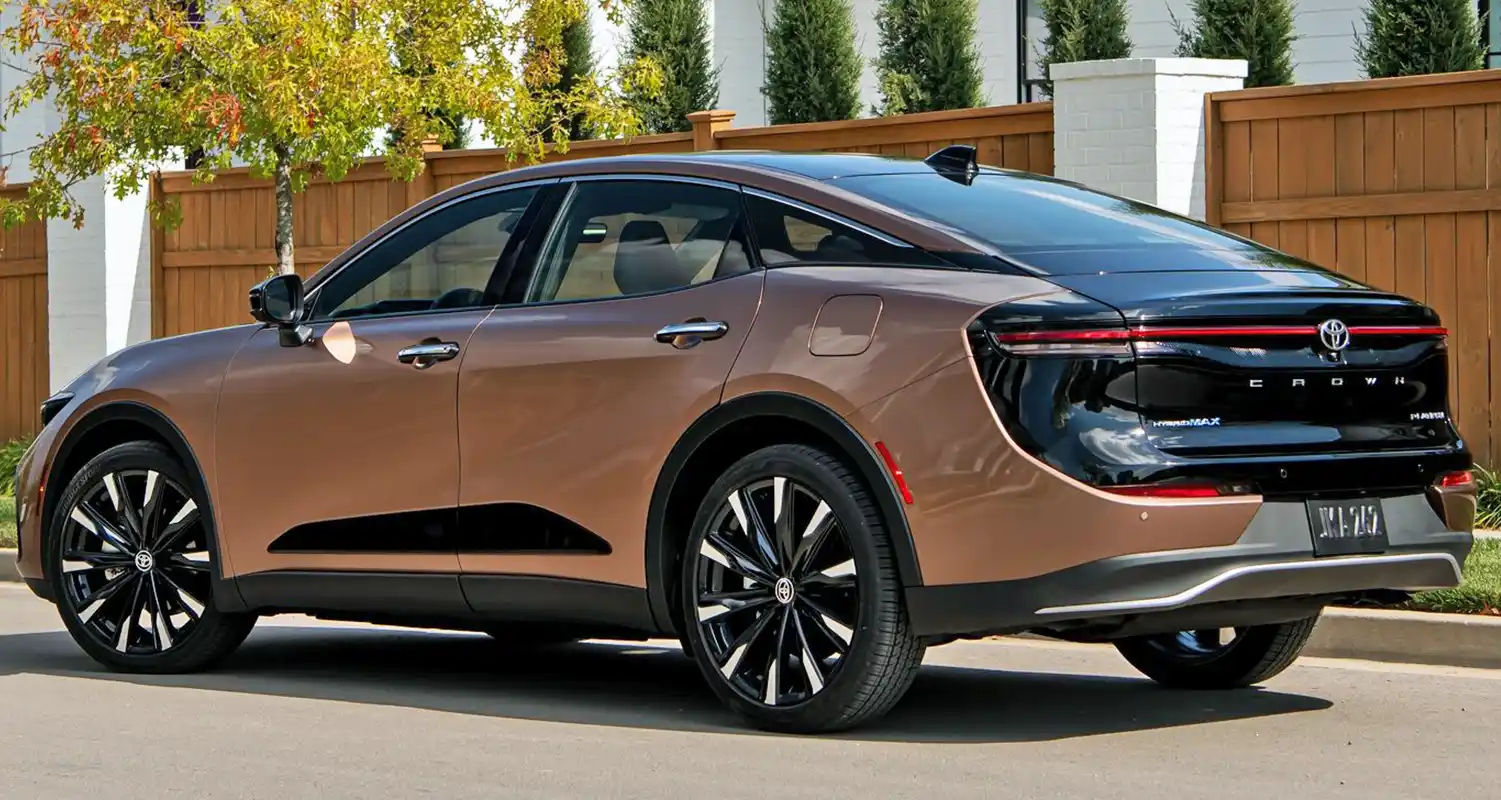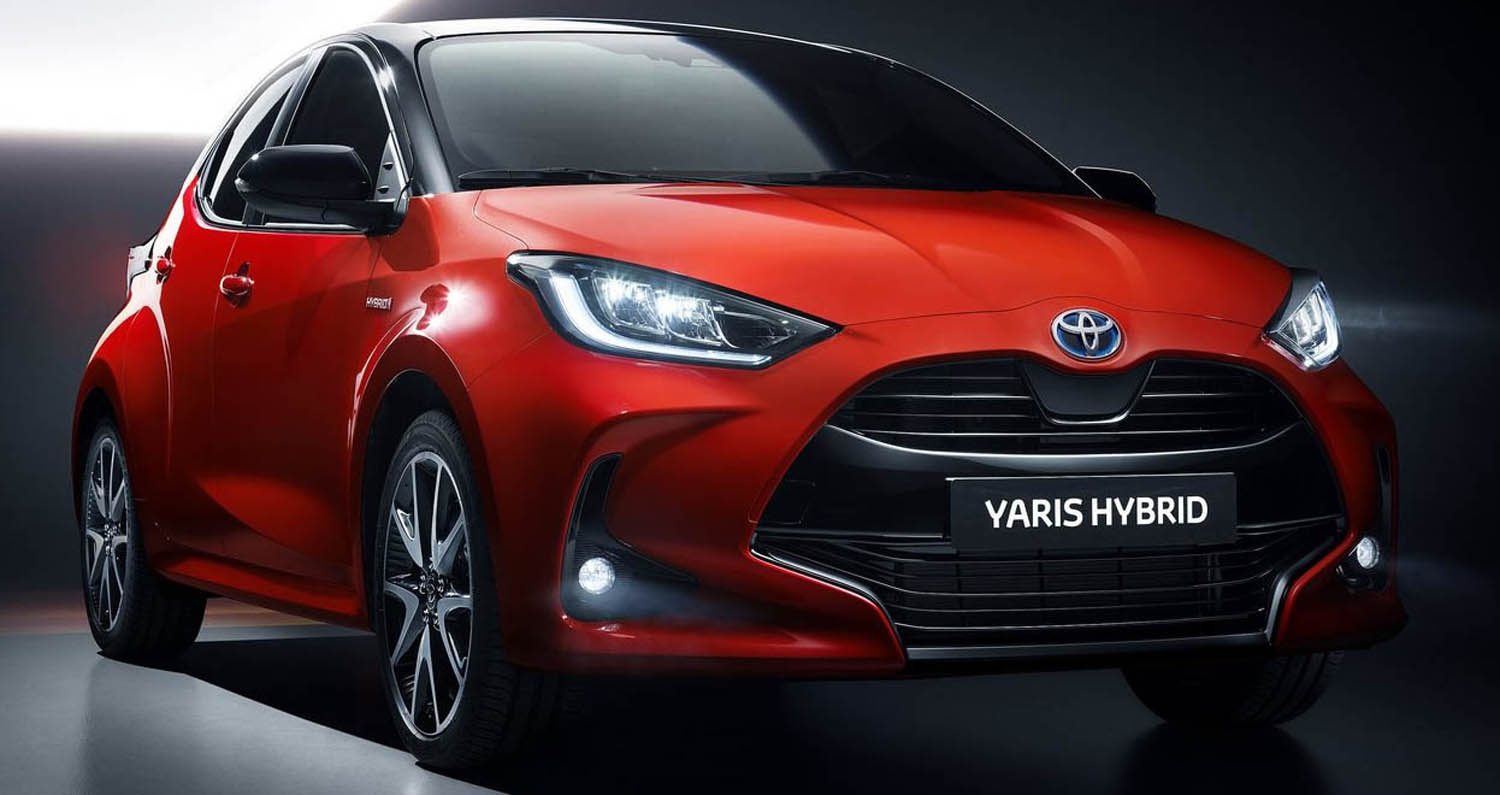
The all-new, fourth-generation Toyota Yaris is a car that meets the demands of urban life, but also provides enjoyment on the open road or highway.
It has been designed to be agile on crowded and confined urban streets, reflected in its compact proportions and class-leading, tight turning circle, while at the same time providing a spacious, comfortable and high-quality interior with equipment specifications that meet all today’s customer priorities for connectivity and seamless access to information.
The key to Toyota meeting its ambitions for the new Yaris is its first application of the Toyota New Global Architecture – TNGA – philosophy to a small car, introducing the modular GA-B platform that will underpin a series of new models. The GA-B platform is central to the Yaris’ improved dynamic performance, giving a lower centre of gravity and much greater body rigidity. It also enabled the designers to create a more distinctive and powerful-looking car with an appealing and individual identity.
The new model uses the latest evolution of Toyota’s fourth-generation hybrid electric powertrain, giving the car better fuel economy, lower emissions and a greatly enhanced capability to operate on its electric power alone, at higher speeds and over longer distances.
In fact, on urban journeys, new Yaris can operate for a significant amount of the time with zero emissions, just like a battery electric vehicle, but with no concerns about recharging.
Reinforcing its reputation as a segment leader in safety, the Toyota Yaris again raises the standard. True to Toyota’s commitment to democratising safety, it benefits from a greater range of Toyota Safety Sense active systems as standard, including Advanced Driver Assistance Systems (ADAS), such as Lane Trace Assist, Emergency Steering Assist and Intersection Turn Assistance.
The functionality of the Pre-Collision System has been increased so that it can detect pedestrians by day and night and cyclists in daytime driving. New Yaris also offers segment-first Intersection Turn Assistance to recognise collision risks with oncoming traffic and pedestrians when making a turn at an intersection, and is the first Toyota to be equipped with centre airbags. These help prevent driver and passenger colliding with each other in a side impact.
With these provisions and the benefit of significantly increased body rigidity from the GA-B platform, Toyota aims to make the new Yaris the world’s safest small car.
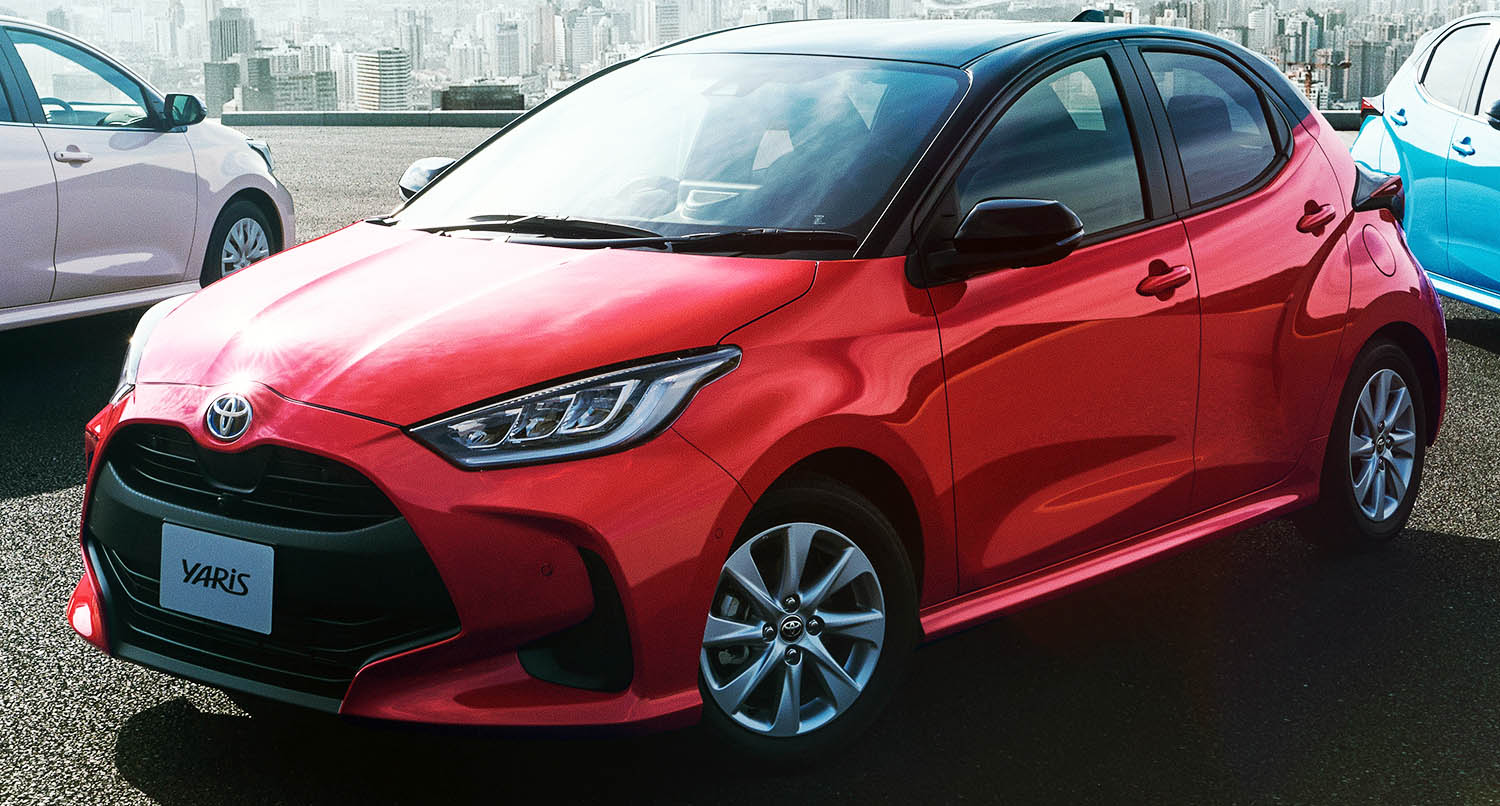
Product development
Yasunori Suezawa is the Chief Engineer of the new Yaris and he has a clear vision of what the car needs to deliver at a time of radical change in the motor industry. He said: “We reconsidered the values required of a compact vehicle as we moved into the next generation. The essentials are fuel economy, safety, spaciousness, usability, and performance. But we must also deliver enjoyable driving to each and every customer – a quality we express in the new Yaris’ theme of ‘ready to go’.”
The development programme brought together skilled people from Toyota’s planning, design, production engineering and manufacturing divisions in a group that became known internally as The Compact Car Company. Its aim was to make ever-better cars and a more exciting new Yaris, a mission founded on the opportunities provided by the new GA-B platform and the fourth-generation hybrid electric powertrain.
Yaris heritage
The Toyota Yaris has an impressive heritage as an innovator. The first-generation model, launched in 1999, was Toyota’s first model to win the European Car of the Year title, and was distinguished by its “big small” character with its remarkably spacious interior.
The second-generation Yaris was the first B-segment model to gain a top five-star rating in Euro NCAP’s safety testing programme, while the third-generation introduced hybrid electric power to the small car market for the first time and made further advances in safety with the standard provision of Toyota Safety Sense advanced driver assistance systems.
Yaris and the European market
In 20 years, the Yaris has become Toyota’s most important model in Europe, steadily increasing both its sales volume and its market share. In 2019 it recorded around 224,000 sales and took 7.6% of the B-segment market, making it Toyota’s best-selling model in the region, accounting for more than 22% of its new car business.
Toyota predicts the B-segment will remain strong part of the market in Europe in the next few years and that Yaris will continue to be one of its principal models, responding to the market’s requirement for cars that have even better fuel economy and lower emissions in order to meet increasingly stringent environmental regulations.
New Yaris also responds to the changing priorities of European small car customers, with rational issues such as cost, practicality, safety and quality being joined more emotional considerations, including style, sportiness, a youthful image and fun-to-drive performance.
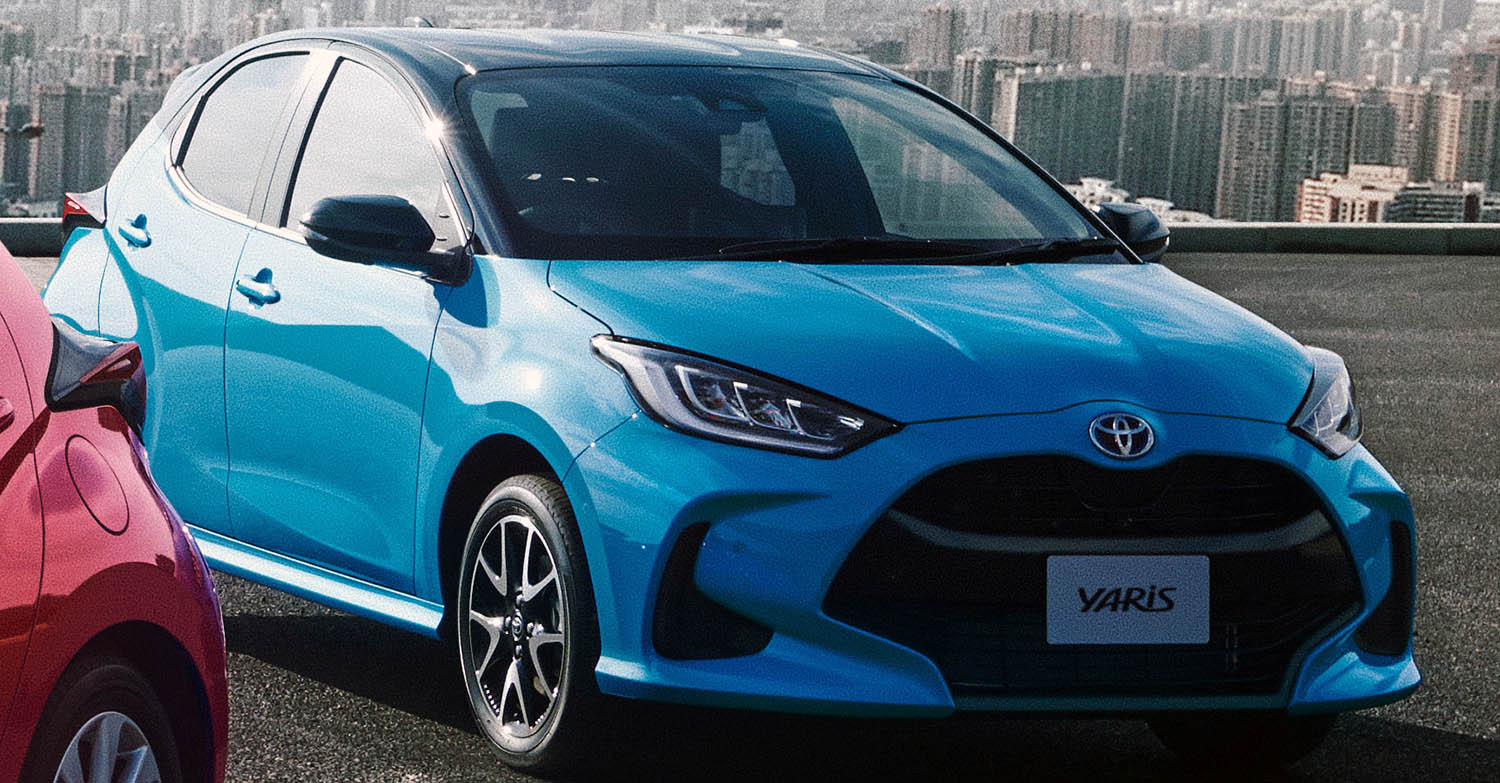
Manufacturing
The new Yaris is built at Toyota Motor Manufacturing France’s Onnaing plant, near Valenciennes, where €300 million has been invested to enable TNGA vehicle production. The 1.5-litre Hybrid Dynamic Force engine and the hybrid transmission are manufactured by Toyota Motor Manufacturing Poland.
DESIGN
The new Toyota Yaris returns to the “big small” concept that inspired the first-generation model but interpreting it anew in a “condensed and agile” look that expresses a sense of the car being full of energy and dynamism and always ready-to-go.
Chief Engineer Yasunori Suezawa explained: “I wanted the styling to capture the stance of an athlete on the starting blocks. You can see this in the rear wings and the car’s new proportions – wider, lower and more compact – giving the impression of condensed power.”
While many B-segment models have been growing progressively longer, the new Yaris is actually shorter than the current model. But although overall length has decreased to less than four metres, the wheelbase has been extended by 50 mm, giving extra cabin space.
The GA-B platform has allowed the overall height to come down by 40 mm, while an increase in the vehicle’s width by 50 mm and an extra 57 mm in the track add to the car’s overall low, wide and powerful stance. The front and rear overhangs have been reduced, too, with 10 mm taken from the front (800 mm) and 45 mm from the rear (580 mm), further accentuating the overall compact dimensions and giving a class-leading turning radius, ideal for negotiating urban streets and parking spaces.
The new platform also gave the designers more freedom to produce an eye-catching, impactful design and emphasise Toyota’s individual design identity compared to its market competitors. The effect of the condensed proportions is amplified by strong character lines down the side of the car, projecting a sense of forward motion. The muscular front and rear wings add to the overall taut, coherent look and, together with the sculpted door panels, express the car’s agility and “ready-to-go” character.
The frontal design is focused on the large grille and central Toyota emblem. The designers have added to the dynamic look by pulling the base of the A-pillar rearwards (which also improves the driver’s forward view) and increasing the bonnet length. The new light units feature LED technology and include turn indicators that alternate with the daytime running lights. The headlights extend towards the front wheels in a strong styling feature that also reduces the perceived length of the front overhang.
The wheels are available in 15, 16 and 17-inch diameter, according to powertrain and model grade.
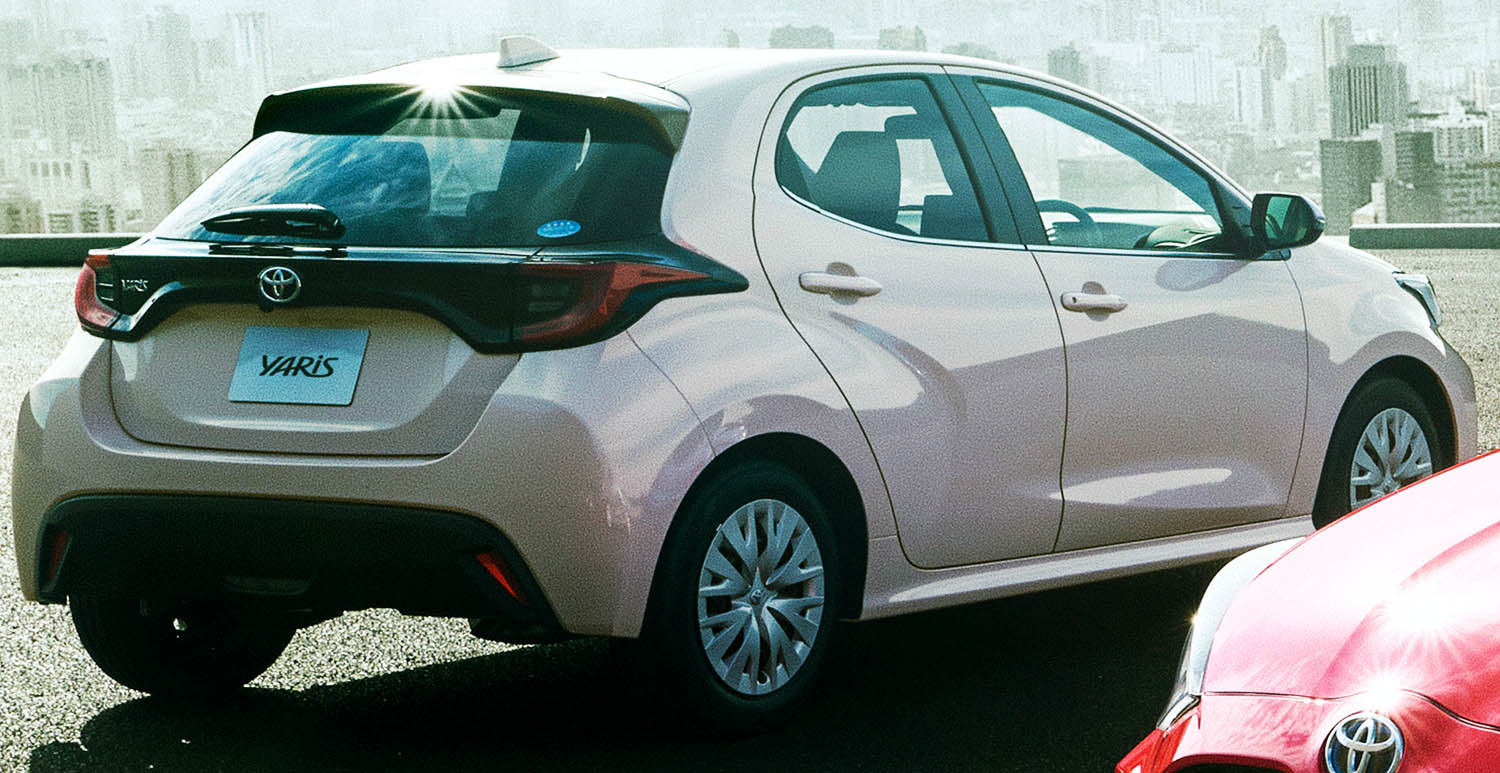
Interior design and packaging
The interior reflects an overall “less is more” concept. It is a sharply designed space that has the solid, and high sensory quality and spacious feel of a car from a class above.
For the driver’s cockpit, the concept is “eyes on the road, hands on the wheel” with the arrangement of displays and controls organised to ensure the driver can focus on the road and keep informed of key vehicle data with the least distraction, and excellent all-round visibility.
“We worked on two main elements to achieve this,” said Chief Engineer Suezawa. “First we maximised visibility by setting the instrument panel lower and pulling the A-pillar further back. The front seats were also moved outwards, so there is more space between the driver and passenger. Second, we wanted to let the driver take in the flow of information with minimal eye movement, so we are offering a large colour (10-inch) head-up display.”
Details include a larger area of soft-touch padding across the dashboard; soft felt inserts in the door panels; a wider front console; a lower hood for the driver’s instrument binnacle; and a small-diameter, sporty steering wheel.
Compact but spacious
As detailed above, the new GA-B platform allowed for a reduction in the car’s overall length, making it the most compact model in its class, but with an increase in its wheelbase. This has been key to achieving interior packaging that ensures space and comfort for everyone on board, echoing the innovative “big-small” character of the original Yaris 20 years ago.
The new Yaris has more space (an extra 20 mm) between the driver and front passenger, and for a wider front console to be designed.
Similarly, load space is good with the boot measuring 700 mm deep and offering 286 litres of storage.
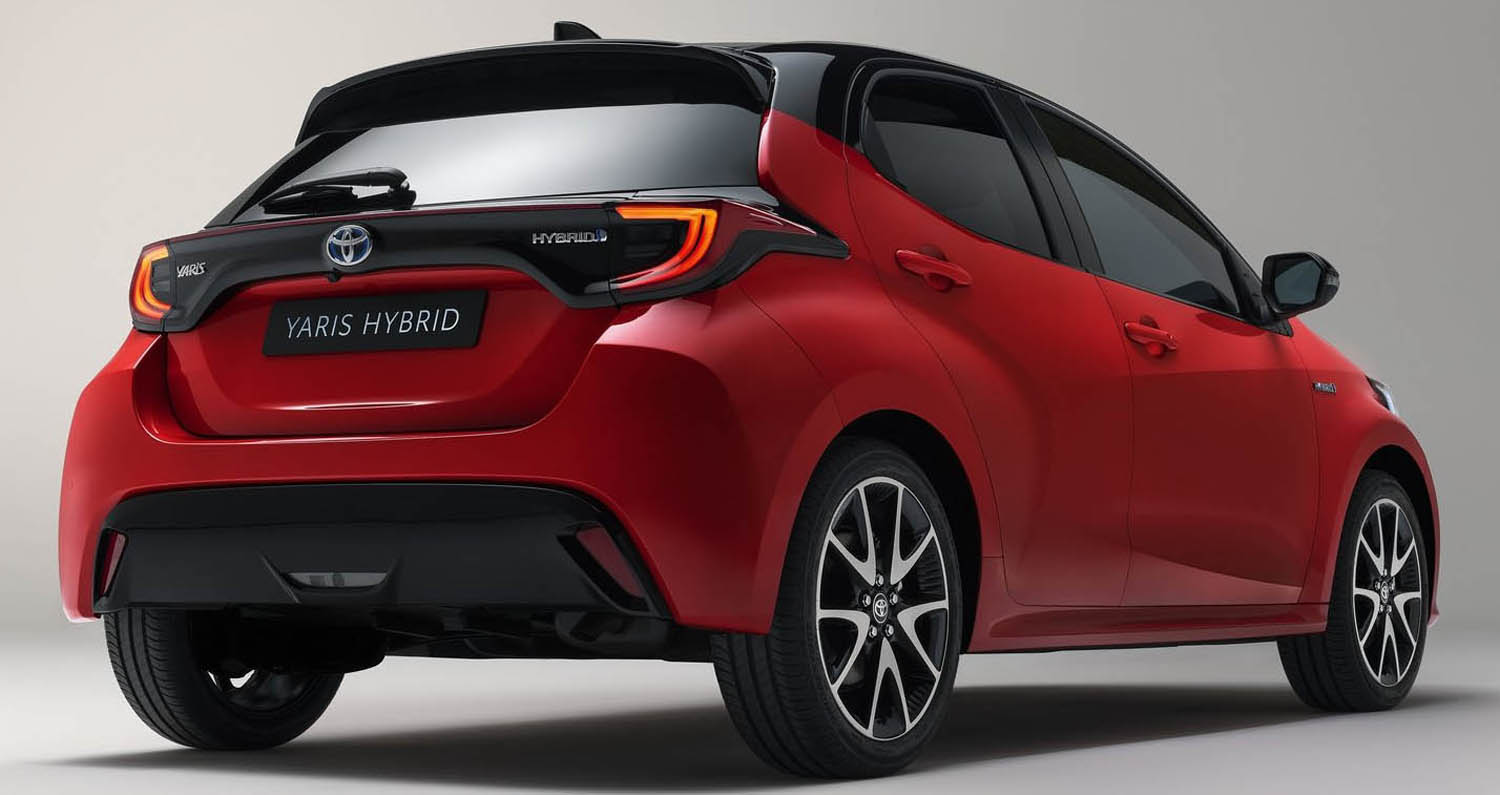
Driving position
The driver’s greater sense of control and connection with the car is enhanced by their position at the wheel. In the new Yaris three fundamental changes have been made to create a more engaging and comfortable driving position and support the car’s fun-to-drive character.
The seat has been moved 60 mm rearwards (which also contributes to the car’s improved weight balance); the hip point has been lowered by 21 mm to give a more dynamic driving position and ensure good head room within the car’s lower overall height; and the steering wheel has been angled six degrees more vertical. The wheel’s reach adjustment has been extended so that it can be brought 77 mm closer to the driver.
The steering wheel has been made smaller and sportier and has new auxiliary buttons with a greater tactile quality. This makes them instinctive to use without having to look at them – another element in the “hands on the wheel, eyes on the road” concept.
Driver distraction is also minimised with a “binocular” arrangement of the meters and TFT multi-information display in the instrument binnacle;the close-at-hand positioning of the eight-inch central touchscreen display, with sharp, high-resolution graphics; and the option of a head-up display.
POWERTRAINS
The new Toyota Yaris uses the latest, fourth-generation Toyota hybrid technology and introduces new components that have been engineered to be compact, lightweight and efficient. It also equips the car with its first TNGA engine.
For the engineering team, the focus was not just on delivering a more efficient system, but also on making the car more enjoyable to drive, with tuning and calibration to suit European roads.
The data indicates the scale of the achievement. Overall efficiency has increased by 20%, which typically would be at the cost of performance. In fact, power is 16% higher at 116 DIN hp (total system output), with a 15% improvement in 0-100 km/h acceleration, to 9.7 seconds, and sharper response to the driver’s use of accelerator.
The car’s all-electric EV capabilities have been transformed: speeds of up to 130 km/h can be reached and EV driving is possible for longer periods in urban traffic. This means drivers can enjoy many of the benefits of a battery electric vehicle, but at a lower price and with no concerns about when or where the battery can be recharged.
CO2 emissions have dropped to 85 g/km and the WLTP combined cycle fuel economy figure is 3.7 l/100/km, a 20% improvement.
These values are unprecedented for a Toyota model and demonstrate the ability of hybrid electric technology to deliver even higher efficiency, without sacrificing performance.
The engineering team was committed to addressing the most common criticisms Toyota heard from Yaris Hybrid drivers. These focused on overtaking acceleration performance at highway speeds (the acceleration time from 80 to 120 km/h has been cut by two seconds to 8.1 seconds); quicker and more responsive acceleration at lower speeds, for example when negotiating a roundabout; and more linear, natural acceleration when driving on open, winding roads, to create a stronger fun-to-drive quality.
Each of the four principal components in the hybrid system contributes to the new Yaris’ enhanced drivability: the all-new Hybrid Dynamic Force Engine makes its debut in the car; the new lithium-ion battery; the all-new hybrid transaxle; and the power control unit. All have been developed using the TNGA philosophy, ensuring efficient design and ease of production at scale.
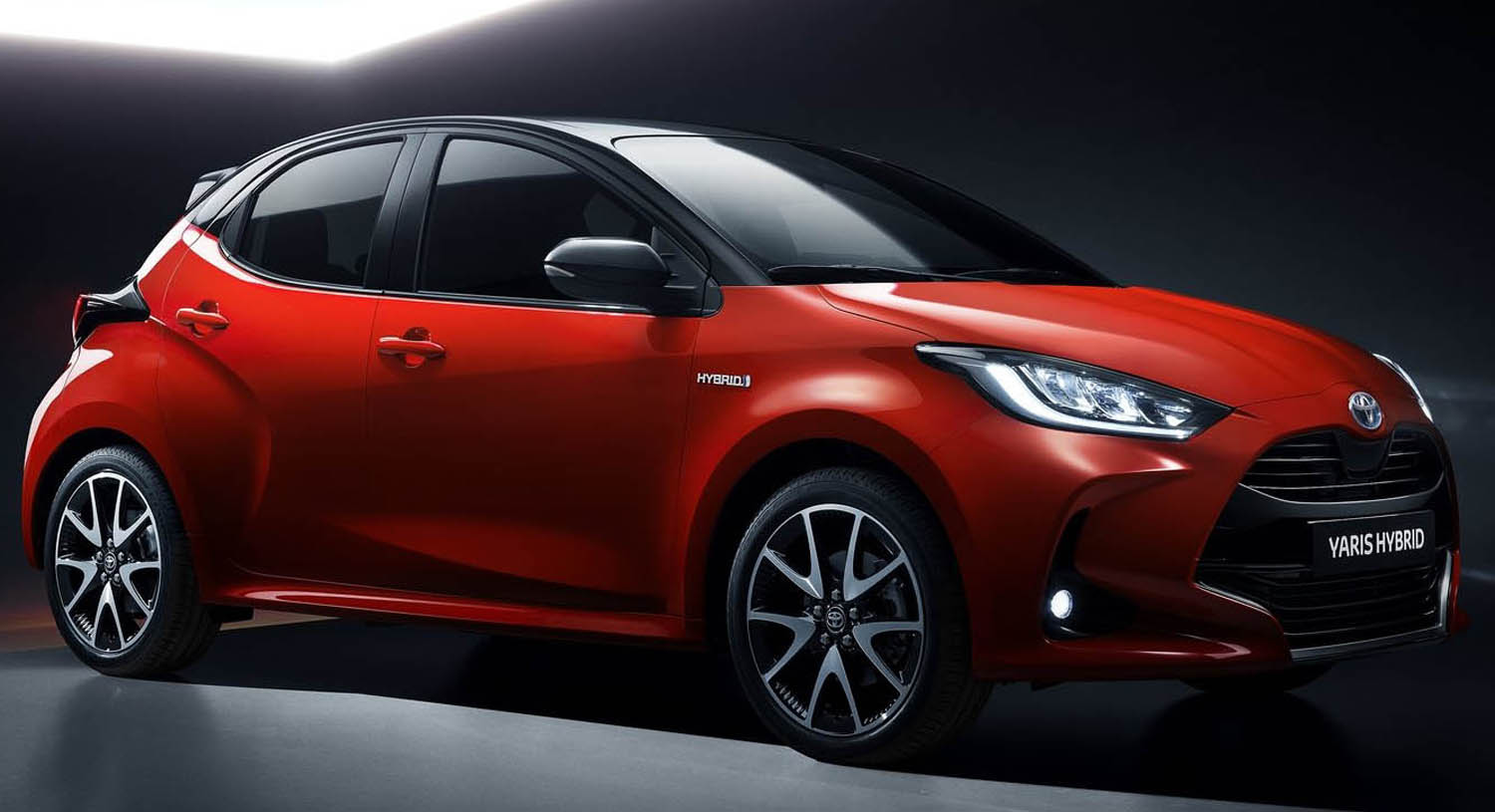
1.5-litre Hybrid Dynamic Force Engine
The all-new 1.5-litre Hybrid Dynamic Force engine is from the same TNGA engine family as the 2.0-litre four-cylinder unit featured in the Toyota Corolla and C-HR. It has a long stroke, 14.0:1 compression ratio and high-speed combustion with better temperature and pressure control. This contributes to the its exceptionally high thermal efficiency – 40% – ensuring that more of the energy potential of every drop of fuel is captured.
In common with all Toyota’s hybrid engines, it uses the Atkinson cycle, which keeps the intake valves open for longer, delaying the compression stroke. This improves efficiency and fuel economy, but reduces power output. Nonetheless, the new engine has a maximum output of 93 DIN hp/68 kW with a peak 120 Nm of delivered at lower revs (3,600 rpm).
The three-cylinder configuration also bring benefits in terms of noise levels. When running at 4,000 rpm, its performance is like a four-cylinder unit operating at 3,000 rpm, thus delivering more power and torque, but generating less noise.
The transmission is a e-CVT automatic – an electric continuously variable transmission – which provides linear acceleration feel and quiet operation.
Motor/generators
The hybrid system in the new Yaris has two motor/generators – MG1 and MG2. MG2 is linked to the front wheels and can be used as the power source to drive the vehicle. The motor rpm at which power can be directed to the wheels determines the maximum speed at which the car can be driven in EV (electric vehicle) mode, making MG2 critical to the car’s drivability on electric power.
MG1 is deployed to start the engine and to generate power to charge the battery.
Lithium-ion Hybrid Battery
The new Toyota Yaris adopts a lithium-ion hybrid battery, with voltage rising from 144 to 177.6 V. The number of cells has been reduced, from 120 to 48. The current flow is significantly improved: by 100% into the battery and 50% out.
With a significantly higher power density, the battery is both smaller and lighter, by 12 kg. Its compact dimensions allow it to be located beneath the rear passenger seat, together with the auxiliary battery, avoiding intrusion in the load space.
Lithium-ion battery technology is better able to supply current flow, which is key to the new Yaris having powerful EV performance in urban driving.
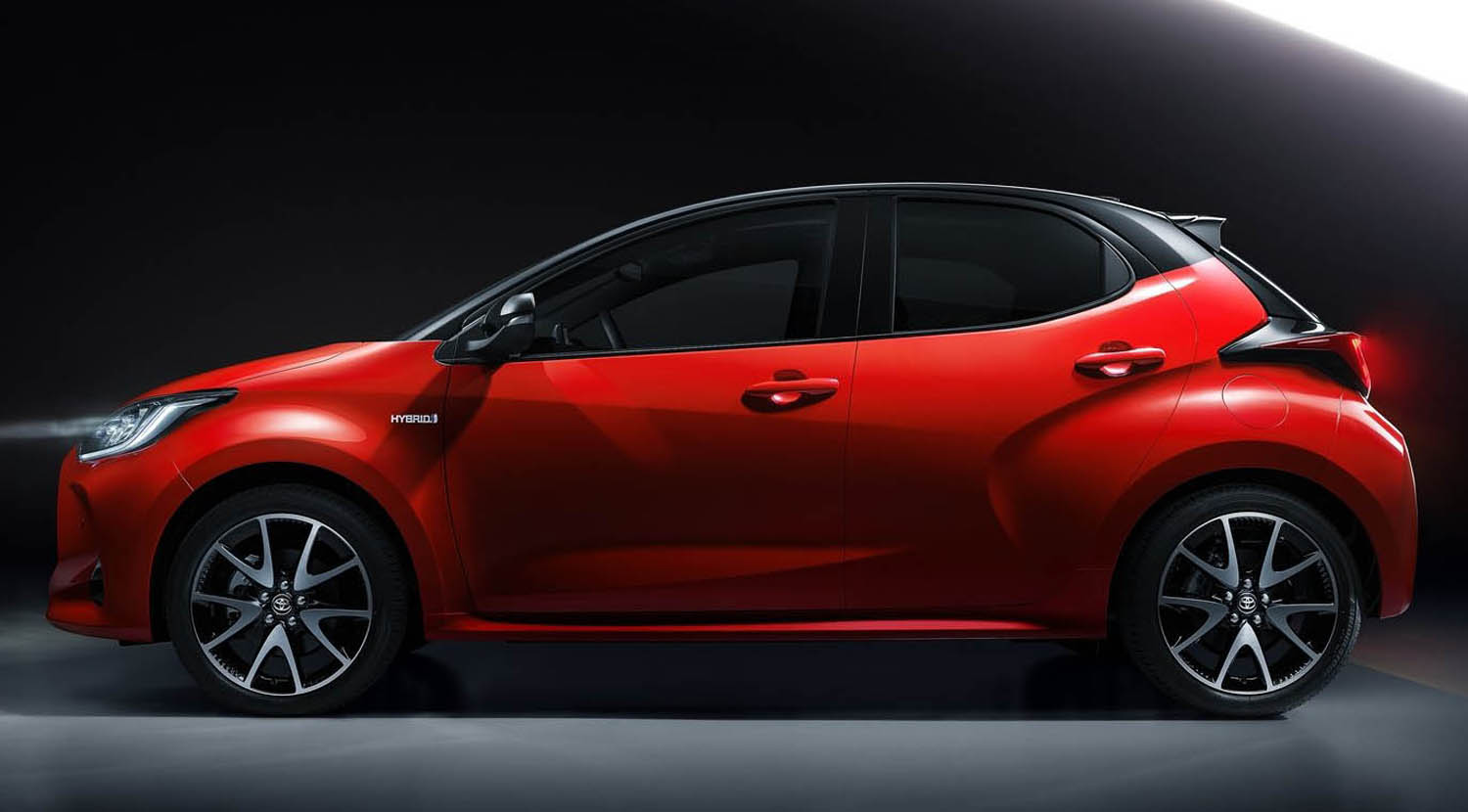
Hybrid Transaxle
The all-new hybrid transaxle is more compact and lightweight, with the two motor generators placed on multiple shafts instead of being placed one behind the other, reducing the unit’s width by around 37 mm. Motor/Generator 2 benefits from new segment-type coils on the stator, which makes the unit more compact. It can deliver 59 kW of power and 141 Nm of torque to the front wheels at a maximum 17,000 rpm. The key benefit is a major improvement in performance, so that the engine can be turned off and the vehicle run in all-electric EV mode at speeds up to 130 km/h.
The transaxle also has a new oil pump, driven by the ring gear, which provides lubrication for both the gears and motor/generator 2.
Power Control Unit
The Power Control Unit has the capacity to handle 100 A of current, boosting the 177 V from the battery to 580 V and using transistor control in the inverter to change the current from direct to alternating. The transistors’ efficiency is affected by heat control inside the unit; by arranging them vertically, they can be cooled on both sides, allowing for more accurate heat control and thereby a higher frequency of current switching – up to 10,000 times a second. This makes a significant contribution to the system’s efficiency and transfer of power to the motor.
The converter in the power control unit converts the 177 V from the hybrid battery to 12V to power the car’s auxiliary components.
Power Split Device
The power split device is the heart of the hybrid system, governing the interaction between the components. It enables the car to operate as a parallel hybrid with the motor/generator 2 powering the car alone, or in combination with the hybrid petrol engine.
Additional powertrains
The new Yaris is also available with a 1.5-litre petrol engine with six-speed manual or continuously variable transmission (W-CVT) with a wide range – W – in first gear. This is essentially the same new three-cylinder unit featured in the hybrid system; compared to competitor small-capacity turbocharged engines, it offers good emissions and fuel economy performance.
In certain markets, a 1.0-litre three-cylinder petrol engine, similar to the one featured in the previous-generation Yaris, is available as an entry point to the new Yaris range.
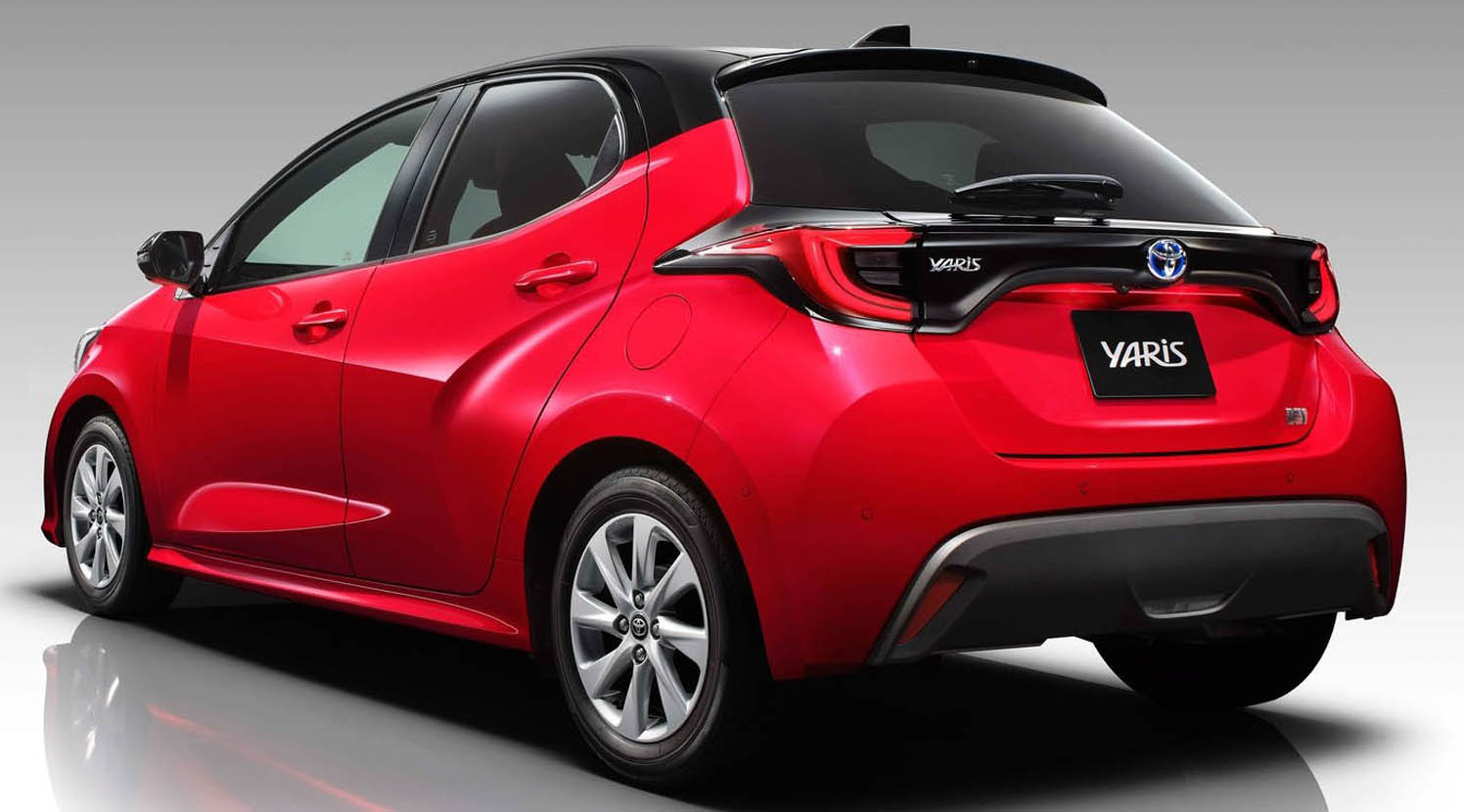
DRIVING DYNAMICS
The new Toyota Yaris’ GA-B platform is the backbone of its dynamic quality, engineered to give a confident and natural drive. The car’s stability inspires confidence, while its response to the driver’s inputs is natural and precise, communicating a heightened sense of agility.
The combination of the car’s compact, low and wide dimensions, the quality of the GA-B platform and the performance of the fourth-generation hybrid powertrain gives the car an essential fun-to-drive quality that strengthens its emotional appeal.
Around town, it offers agile handling, with a best-in-class 4.9 m turning circle and crisp steering response making it considerably easier to manoeuvre and park on busy urban streets, while on the highway or open road, performance is smooth and relaxing with excellent straight-line stability.
“I wanted to transform Yaris’ driving dynamics, delivering what we call a confident and natural drive,” said Chief Engineer Suezawa. “That’s one that is smooth, accurate and agile, contributing to the fun of driving. It is the TNGA chassis that has made all this possible.”
The GA-B platform will be used for all Toyota’s future small cars, including its new B-SUV model.
High-rigidity body
The high-rigidity body contributes to higher safety levels (detailed in the Safety chapter below) superior chassis handling and responsiveness, ride comfort, and lower noise and vibration levels.
The new Yaris’ GA-B platform – including both chassis and drivetrain – delivers a 37% increase in torsional rigidity, taking it to a best-in-segment level. This has been achieved through a series of body reinforcements, a stiffer dash panel and more extensive use of spot welds and bonding adhesive in the car’s construction.
The car’s longitudinal beams are connected to the bumper reinforcements, and in the front suspension the top of the shock absorber serves as the upper steering pivot. Further rigidity has been gained from a new ring structure in the dash/cowl area, while in the middle section of the car there are reinforcements to the tunnel and rear structure, creating another robust ring structure.
At the rear, gussets have been added to the wheelhouse floor panel, with reinforcements to the wheelhouse and rear pillar again forming a ring structure.
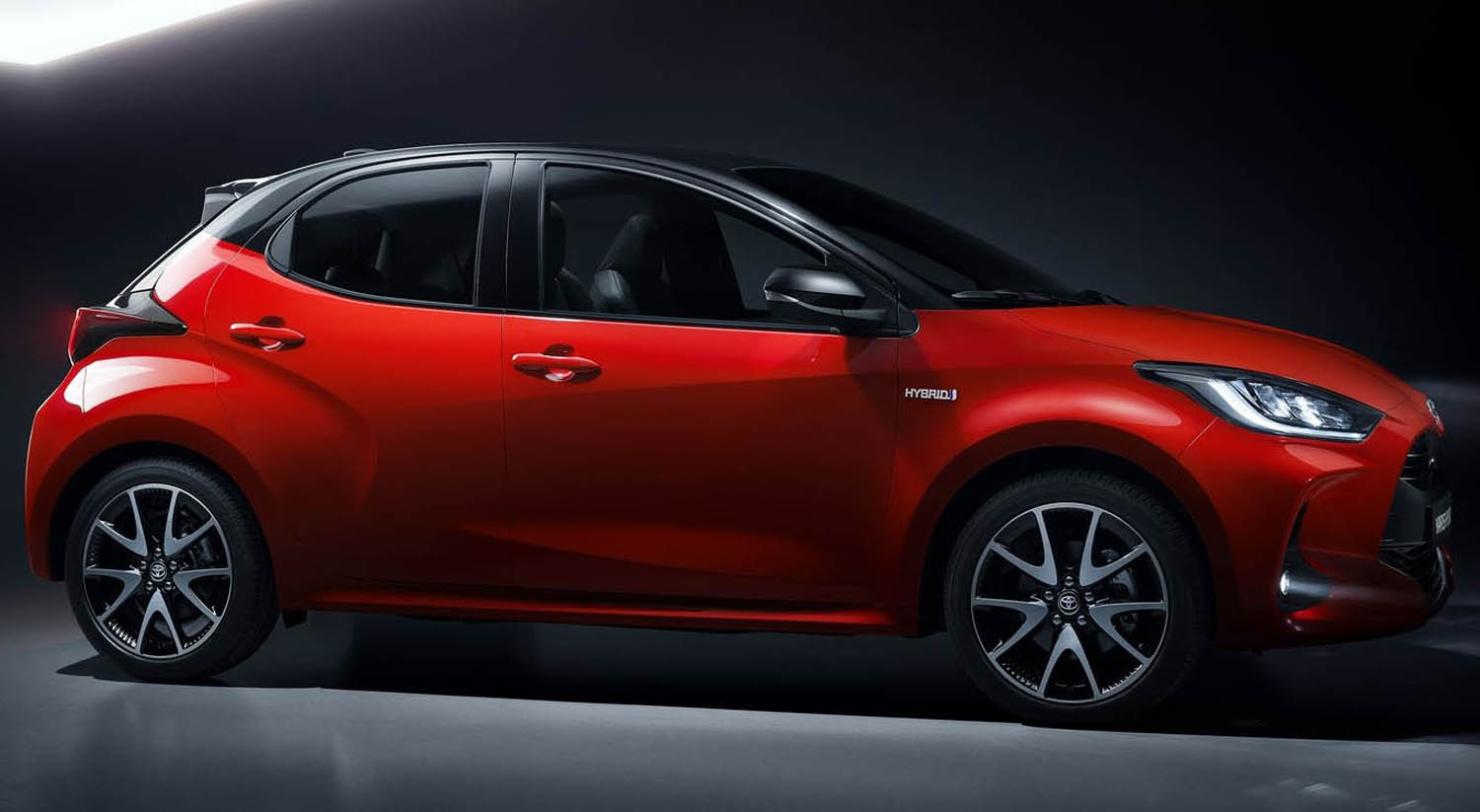
Low centre of gravity
As in all TNGA-based models, the new Yaris has a low centre of gravity – around 12 mm lower than the current model – giving the car better inertia characteristics and making it feel more stable when cornering at speed. This reduction has been achieved by moving heavier components closer to the centre of the car, and setting them lower, starting with the roofline and including the engine and the seats.
As well as a lower centre of gravity, the car has an improved weight balance, both front/rear and left/right, which helps reduce body roll and improve braking stability and stopping distances.
Suspension
The suspension design is critical to a car’s driving dynamics. One of the most significant applications of the TNGA philosophy is to ensure that each new model benefits from the optimum set-up. The Yaris has an all-new arrangement, with the front MacPherson struts set at a revised angle, operating with reduced friction. The top of the shock absorbers now serves as the upper steering pivot, while the change in suspension angle has allowed for better alignment of the shock absorbers and springs, resulting in less vibration.
The rear torsion beam has been made 80% stiffer and the rear roll stiffness has been increased more than 80%, reducing body roll when cornering and improving the car’s all-round agility. The increase in suspension stiffness has allowed for softer springs to be used. Together with the car’s improved front/rear chassis balance, this improves ride comfort.
Reduced noise and vibration
The GA-B platform brings further benefits in terms of reduced noise and vibration levels, making for quieter and more refined environment on board.
The platform architecture and the upper body are designed to reduce the amount of noise entering the cabin. The engineers pinpointed the areas where most noise intrudes – the dashboard and floor panels – and adjusted their design to filter out external noise.
Extensive body sealing, which also contributes the car’s rigidity, further helps keep noise away from the cabin.
EQUIPMENT FEATURES
The quality of the new Toyota Yaris’ design and performance are matched by generous equipment specifications and the availability of features more commonly found in larger models from a class above.
Toyota expects up to 60% of sales to be of higher-grade models. This includes Mid+, the “centre of gravity” in the range; Elegant, which has a classic look; and Style, which has a more youthful and dynamic profile.
Across the range, standard features include Toyota Safety Sense, a reversing camera and an electronic parking brake. Options include Rear Cross-Traffic Alert with Auto Brake, to help safe manoeuvring out of parking spaces, a Blind Spot Monitor and Intelligent Clearance Sonars.
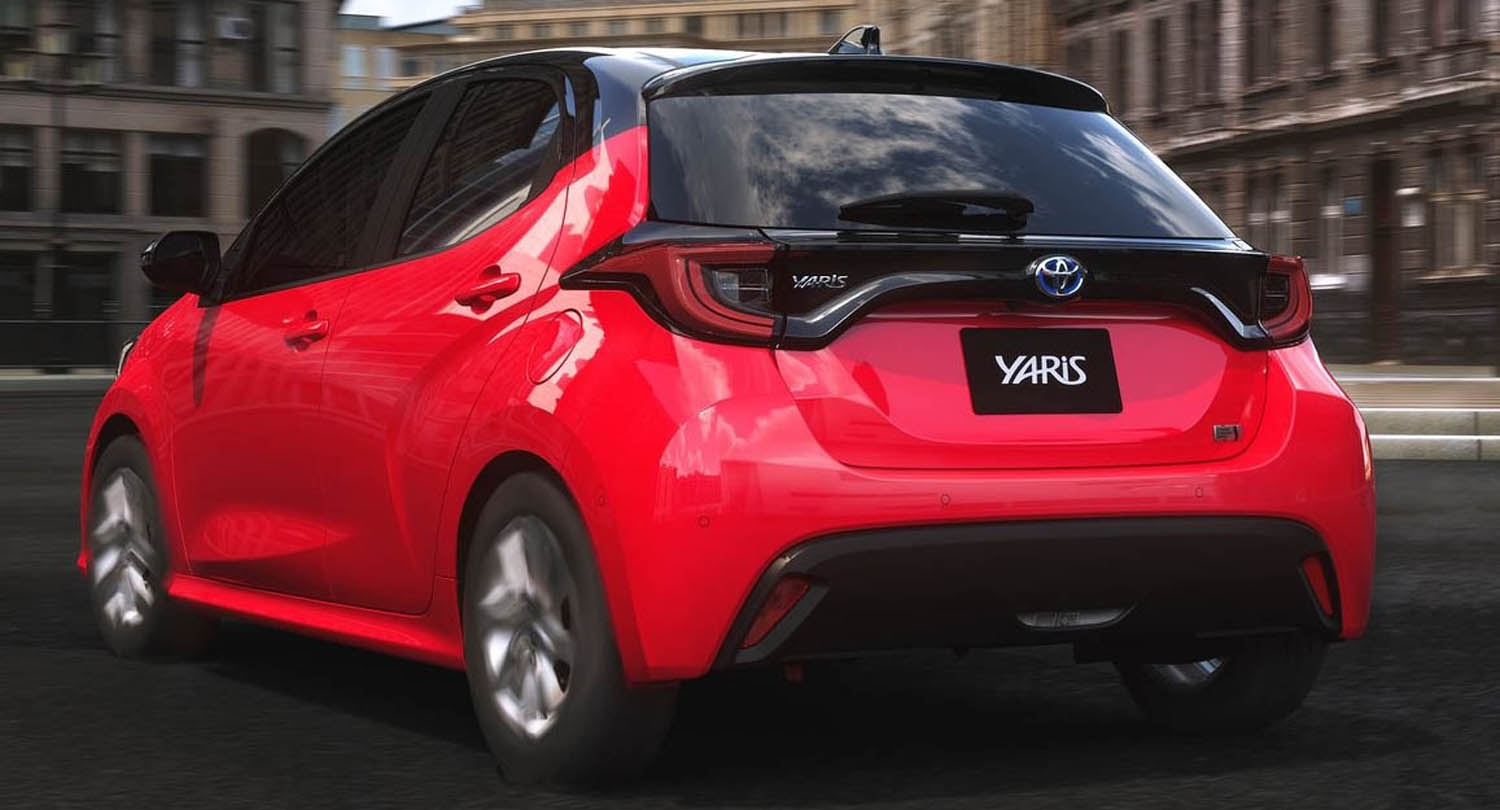
Colour head-up display
The new Yaris is the only model in the B-segment to offer the option of a 10-inch colour head-up display. This projects key information onto the base of the windscreen, in the driver’s line of sight, true to the car’s “hands on the wheel, eyes on the road” concept. The data includes vehicle speed, safety warnings (linked to the Toyota Safety Sense systems), navigation support and multimedia information. The driver can select which information to view using a menu setting on the multi-information display.
Premium features
Examples of the premium quality features that can be specified for the new Yaris include an eight-speaker JBL premium audio system, a heated steering wheel and ambient blue cabin lighting in the footwells, door panels and centre console. A full LED lighting pack is also available, including fog lights.
Seamless connectivity
All new Yaris models enable seamless, wireless smartphone integration via Apple CarPlay and Android Auto, allowing users easy access to their favourite apps using the car’s central eight-inch multimedia control screen.
Useful connected services can also be reached using the MyT Toyota app. Features include practical and useful information about Toyota, a “find my car” function and “last mile” guidance, providing step-by-step directions if you cannot park at your destination. “Send to car” allows the driver to plan their route while they are away from their vehicle and send it to their navigation system.
The app also logs driving data, so information about mileage, speed and acceleration can be retrieved at a later date. MyT can also provide reminders when the car’s service is due.
Wireless smartphone charger
A wireless smartphone charger is available for the new Yaris. Measuring 150 by 80 mm, it is large enough to accommodate the latest generation of handsets.
SAFETY
The Toyota Yaris has an impressive safety track record, the second-generation model having been the first model in its class to achieve the top five-star ranking in the European motor industry’s benchmark Euro NCAP safety testing. Subsequently the benefits of more advanced collision avoidance and driver assistance technology were made available with the introduction of Toyota Safety Sense to the range as standard in 2017 – another first for the segment.
The new Yaris takes small car safety to an unprecedented level and has been equipped to be the safest model in its segment. Its key strengths are a significant increase in body rigidity, a direct benefit of the new GA-B platform, and a leap forward two generations in Toyota Safety Sense. In fact, a number of new features and systems are making their debut in a Toyota, reaffirming Toyota’s commitment to democratising the highest safety provisions, making them as widely available as possible.
Being equipped with a data collection module, the new Yaris benefits from eCall to automatically alert the emergency services to the car’s location in the event of serious impact.
Increased body rigidity
Building new Toyota Yaris on the GA-B platform has brought about a 37% increase in the car’s torsional rigidity to the highest level in the B-segment.
This built in strength has been achieved through extra welding and bonding adhesives, additional reinforcements and the creation of robust ring structures in the body to increase stiffness (full details in the Driving Dynamics chapter, above). This added strength allows for better protection to impact forces, helping maintain the integrity of the cabin and the safety of the occupants in the event of a collision.
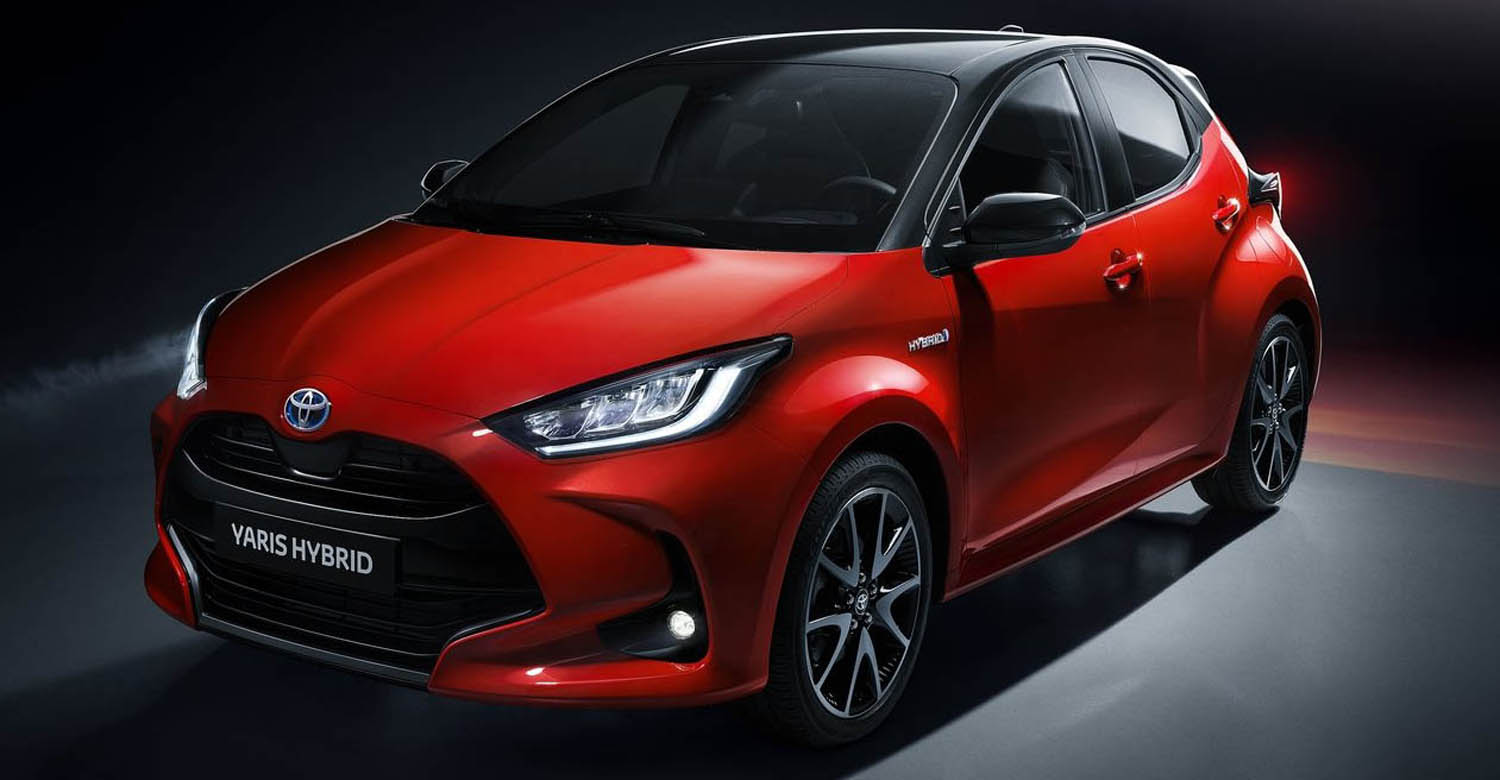
First Toyota with centre airbags
The new Yaris is the first Toyota to be equipped with SRS centre airbags. Fitted as standard, these deploy in the event of a side impact to help prevent the driver and front seat passenger colliding with each other.
Toyota Safety Sense
Being a small car is no barrier to the new Yaris benefiting from the latest Advanced Driver Assistance Systems (ADAS). An established pioneer it its class in the field of active safety provisions, Yaris now moves further ahead – not just benefiting from the latest-generation features but adopting a number that are appearing for the first time in a Toyota.
The Toyota Safety Sense package for the new Yaris offers more features than any other current Toyota model and is more extensive than any of its B-segment competitors, comprising:
- Pre-Collision System with vehicle detection, pedestrian detection (day/night), cyclist detection (day), Intersection Turn Assistance (vehicle and pedestrian detection), Emergency Steering Assistance
- Intelligent Adaptive Cruise Control (full speed range on Yaris Hybrid)
- Road Sign Assist
- Lane Departure Alert with Steering Control and Lane Trace Assist
- Automatic High-Beam
Collision avoidance support
The collision avoidance support has been upgraded with improved operation and wider functionality. Notably the vehicle-to-vehicle speed range of the Pre-Collision System PCS) has been increased to 180 km/h.
PCS also gains the ability to detect pedestrians in the car’s path, in both day and night-time driving, at speeds up to 80 km/h, and cyclists, in daylight driving.
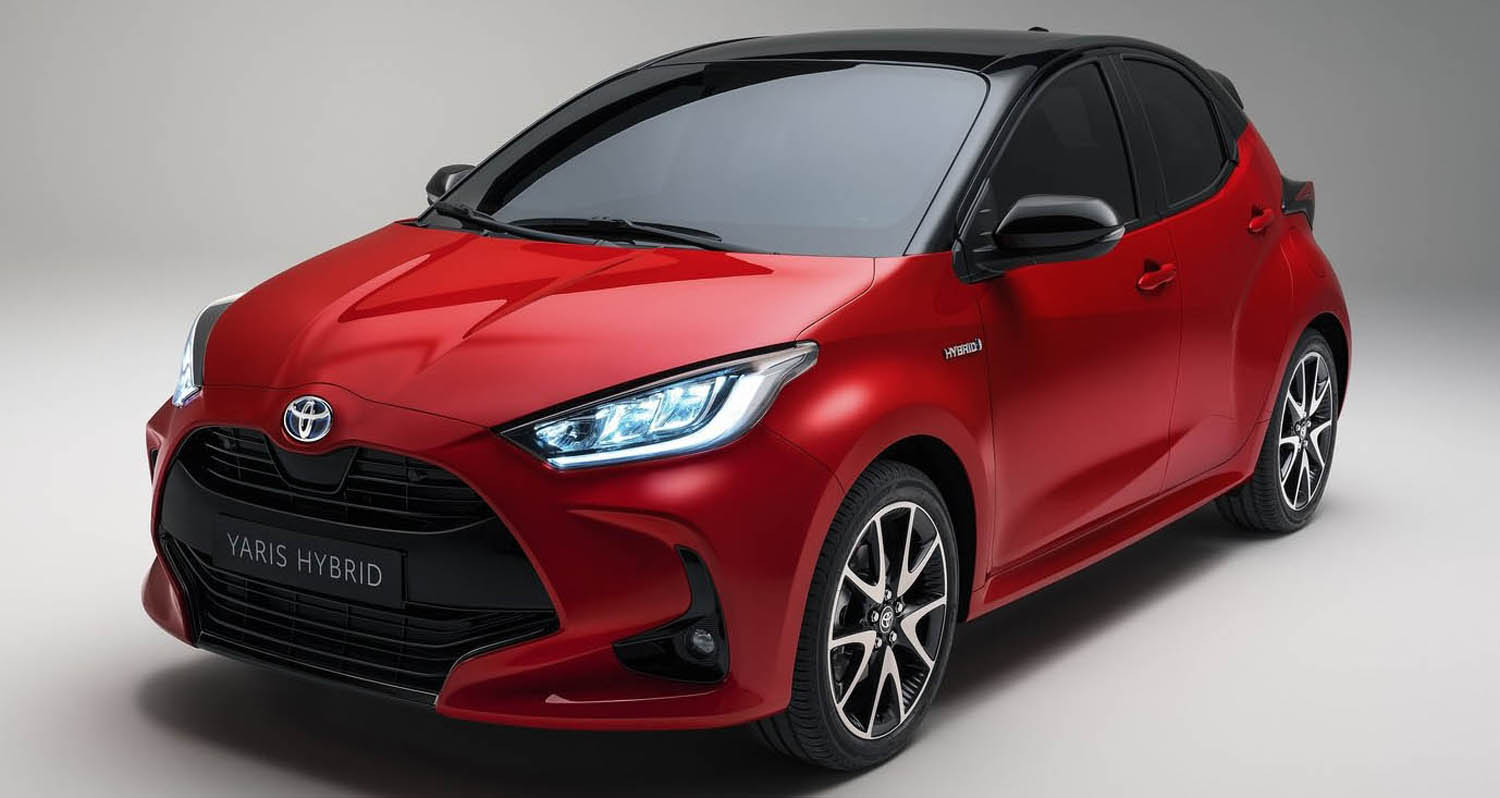
Intersection Turn Assistance
The new Yaris is the first Toyota to benefit from Intersection Turn Assistance. This helps avoid the common risk of colliding with another vehicle or a pedestrian when making a turn at an intersection.
If the system detects an oncoming pedestrian crossing the carriageway the vehicle is about to turn into, or if there is a risk of the vehicle moving across the path of oncoming traffic, it will sound alert and, if the driver fails to respond, apply automatic emergency braking.
The function operates at speeds between 10 and 25 km/h.
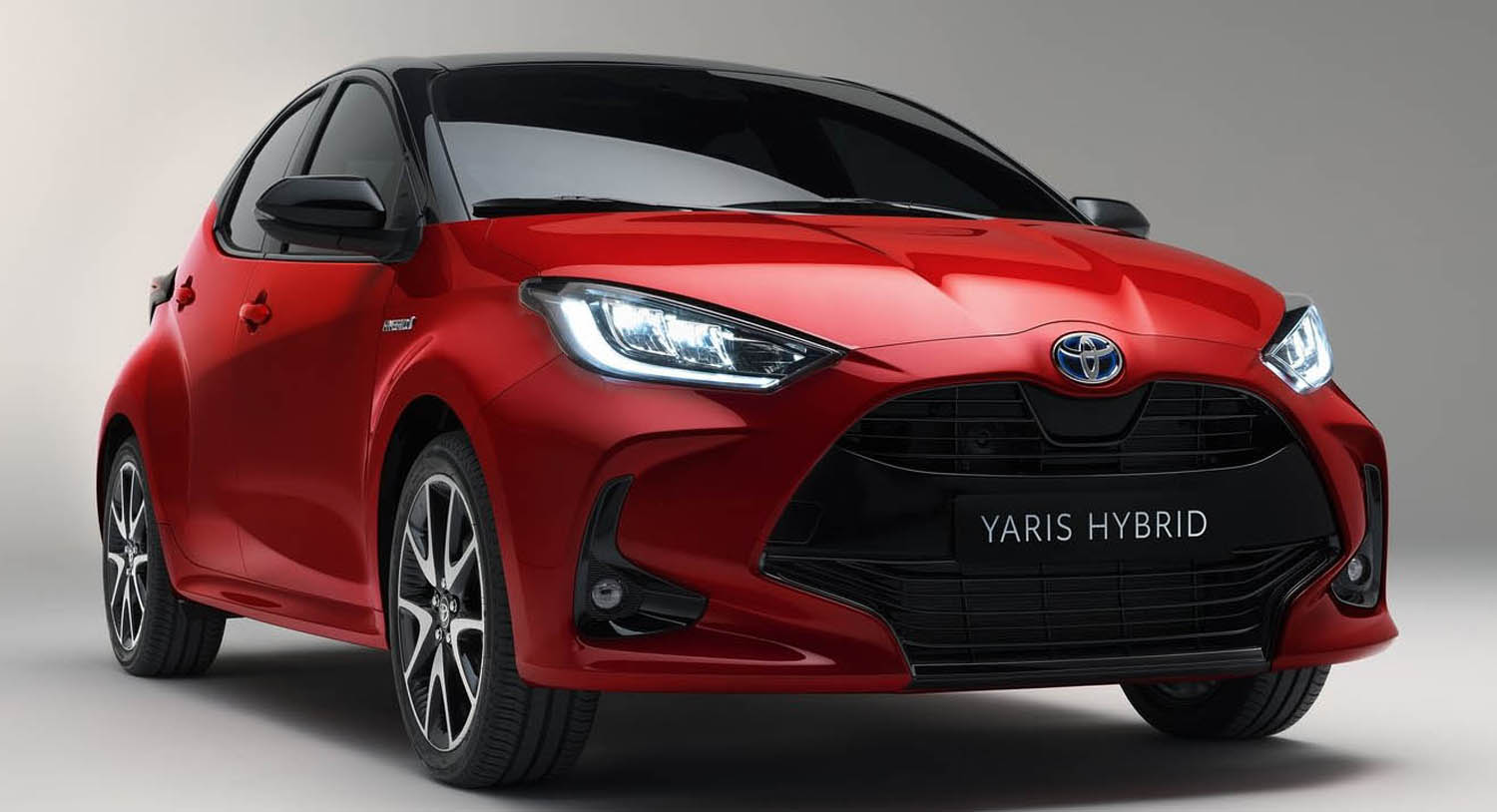
Adaptive Cruise Control
The upgrades to the Toyota Safety Sense systems include the Adaptive Cruise Control on Yaris Hybrid operating at speeds from zero to 180 km/h. It will bring the car to a stop if the vehicle in front comes to a halt. If the stop is less than three seconds, restart is automatic; after a longer stop, the car can be restarted with slight pressure on the accelerator, or by pressing the ACC switch. As well as improving safety, this takes much of the stress out of driving in stop-start traffic.
The ACC will also work in conjunction with the vehicle’s Road Sign Assist, to suggest an appropriate new speed setting to the driver when changes in speed restrictions are recognised.
Lane Departure Alert with Steering Control and Lane Trace Assist
Lane Trace Assist is also provided on the Yaris for the first time, together with Lane Departure Alert with Steering Control.
If the car unintentionally leaves its traffic lane, crossing a lane marking, a warning sounds. The driver can now additionally select steering control, which automatically keeps the vehicle centred in in its lane.
The system can recognise standard white and yellow road markings, and also road margins (kerbs, grass or earth), so that steering assistance is available for more of the time, both on straight roads and through bends.
If the road markings are obscured, or can’t be detected, the system will follow the path of the vehicle ahead, while keeping within the traffic lane.
Emergency Steering Assist
Emergency Steering Assist is another Toyota safety first. It supports the driver when there is a possible collision risk with a pedestrian or obstacle in the car’s lane of traffic and they have to swerve to avoid an impact. The system provides additional steering torque to enhance vehicle stability and prevent the car from leaving its traffic lane.
Rear Cross-Traffic Alert and Blind Spot Monitor
To help prevent common bumps when manoeuvring at low speed, Rear Cross-Traffic Alert is available as an option, including an automatic braking function that operates if cross-traffic is detected when reversing, or a static hazard when parking. This option also includes a Blind Spot Monitor which will alert the driver to potentially unseen vehicles to either side.
Intelligent Clearance Sonar with automatic braking
The Intelligent Clearance Sonar system can help owners avoid the kind of bumps and scratches that can easily occur when parking manually and cost a lot to repair. If the ultrasonic sensors at the rear of the car detect an object that’s about to be hit, automatic braking is triggered to prevent an impact.

